Take Me to the Recipes
“…. Keep, ancient lands, your storied pomp!” cries she
“The New Colossus”
With silent lips. “Give me your tired, your poor,
Your huddled masses yearning to breathe free,
The wretched refuse of your teeming shore.
Send these, the homeless, tempest-tost to me,
I lift my lamp beside the golden door!”
by American poet Emma Lazarus (1849–1887)
Statue of Liberty, New York
Reference: Statue of Liberty, New York
So reads the encryption on the Statue of Liberty on Ellis Island in New York. The invitation to immigrants from all over the world to make America their home.
This has resulted in the cuisine being a melting pot of flavors and influences. From the East Coast to the West Coast and everywhere in between, the varied landscape of America has given rise to a unique American cuisine. Each region has its own flavors and dishes, reflecting the unique origins and charm of their people.
Exploring American food means taking a culinary journey from coast to coast. From the classic burger to Southern fried chicken, New England clam chowder, Tex-Mex, Chicago deep-dish pizza, Key Lime pie, and Pacific Northwest salmon, each dish offers a unique taste of America’s rich food culture.
Join us as we delve into the origins and flavors of each quintessential American dish, and discover what makes them truly special.
Take Me to the Recipes
American Cuisine – Key Takeaways:
- American national dish is a reflection of the country’s diverse culinary heritage.
- The varied landscape of America has given rise to a unique national cuisine.
- Each region has its own flavors and dishes, reflecting the unique origins and charm of their people.
- Exploring the American national dish means taking a culinary journey from coast to coast.
- Each quintessential American dish offers a unique taste of America’s rich food culture.
Where is America?

Index to the Article
- Take Me to the Recipes
- More Articles
- 10 Fascinating Facts about America
- America’s History and the Effect It Has Had on the Cuisine
- How America‘s Climate and Geography Have Influenced the Cuisine
- Understanding the Essence of American Food
- American Culinary Traditions
- Exploring American Ingredients
- Mastering American Cuisine Cooking Techniques
- Traditional American Food
- Exploring American Street Food
- The Most Popular the American Food Recipes
- What are the Health Implications of American Cuisine?
- America’s National Dish
- American Food – Great Recipes to Try at Home
- Conclusion
- Frequently Asked Questions
The following Articles may Interest you
- North and South American Cuisine – A Culinary Expedition
- Europe Cuisine: Savor the Continent’s Best Culinary Secrets!
- African Cuisine: Discover the Bold Flavors & Global Charm!
- Asian Cuisine Unlock its Secrets – Taste, Health & Global Influence!
Savor iconic American Food Recipes – Click on each tantalizing picture to open up the Recipe






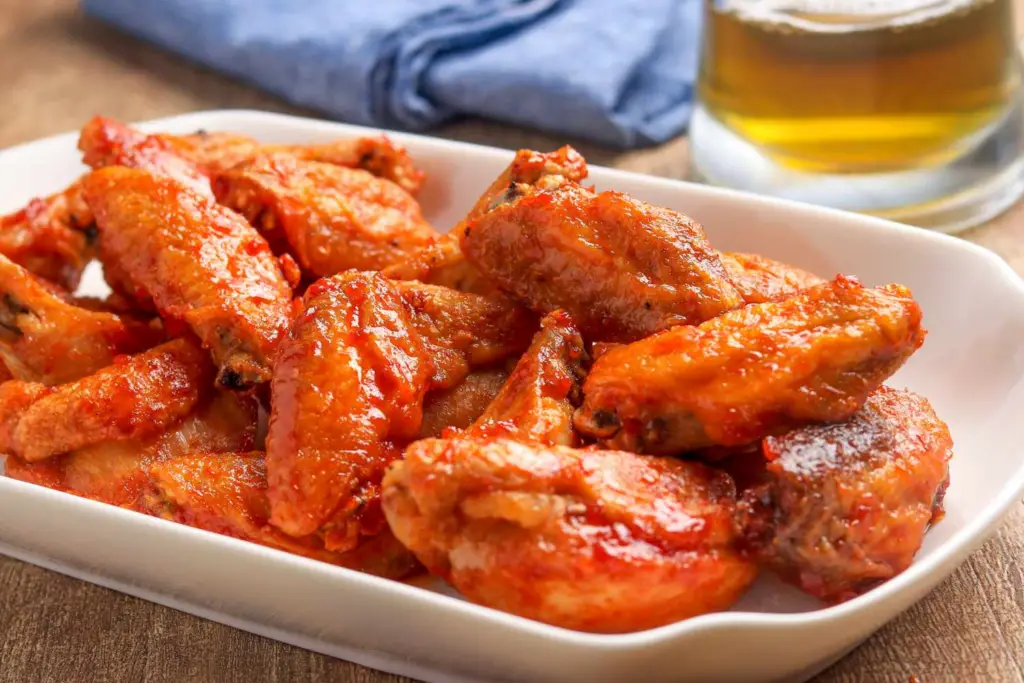
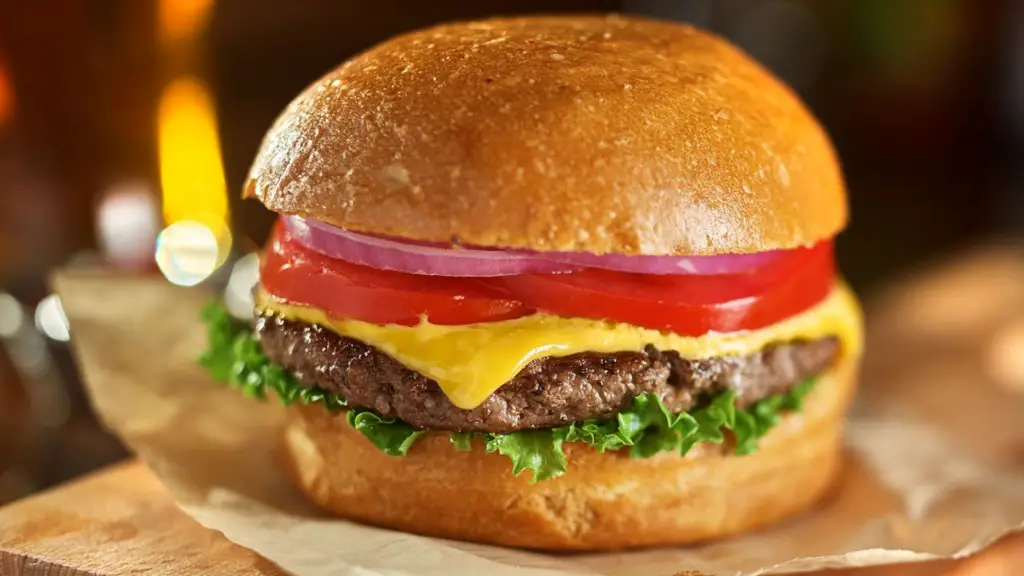

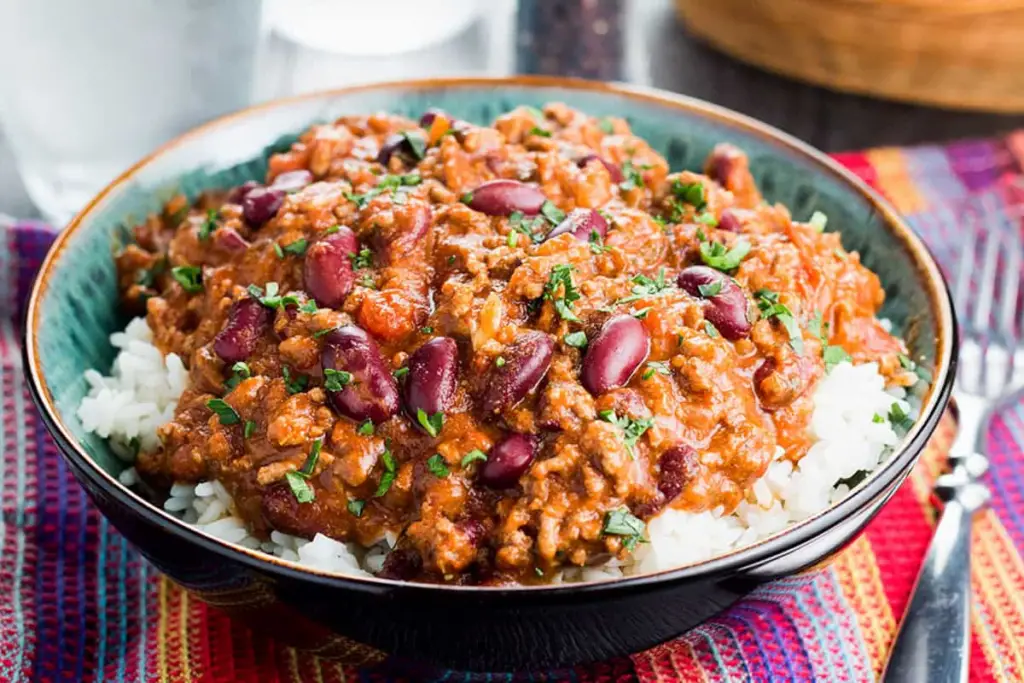
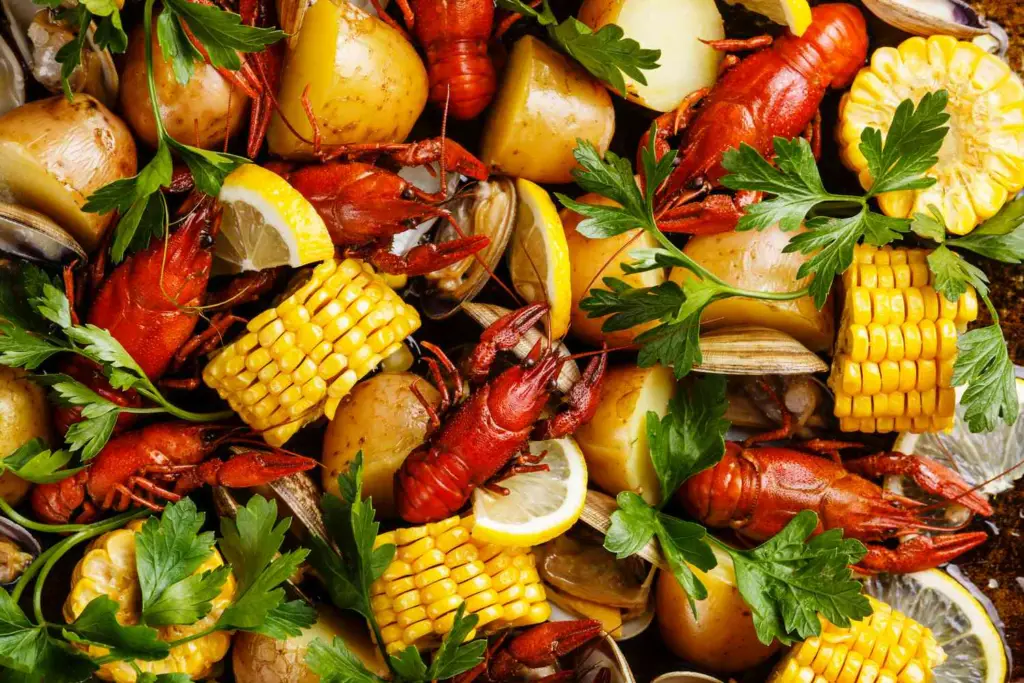






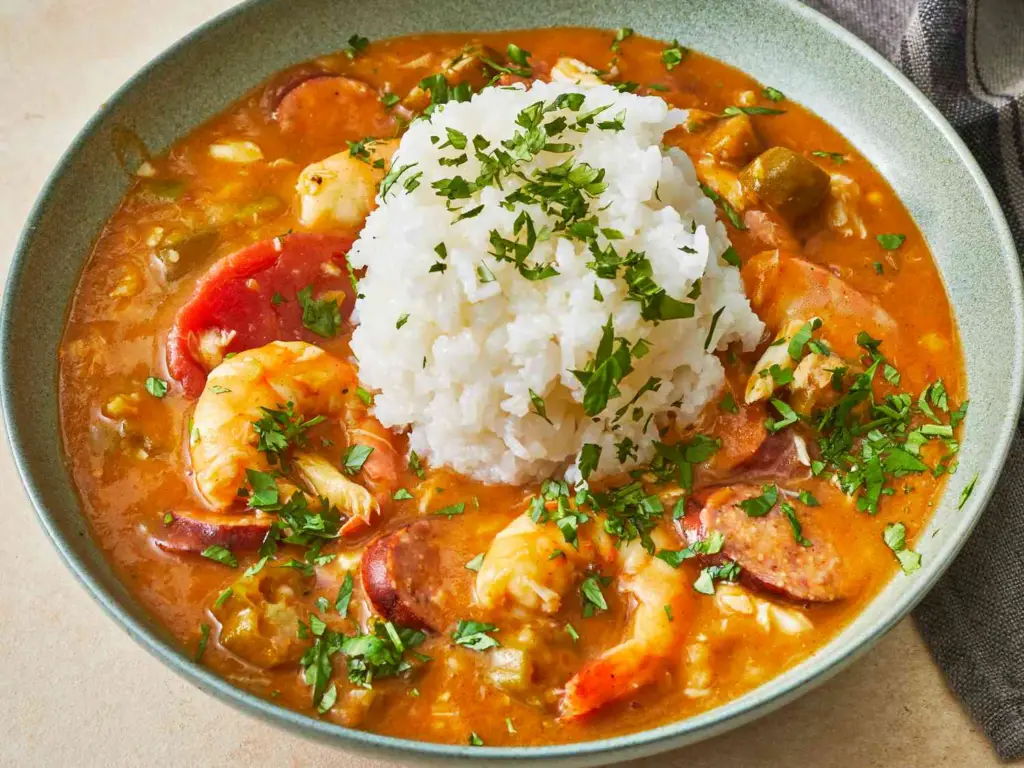
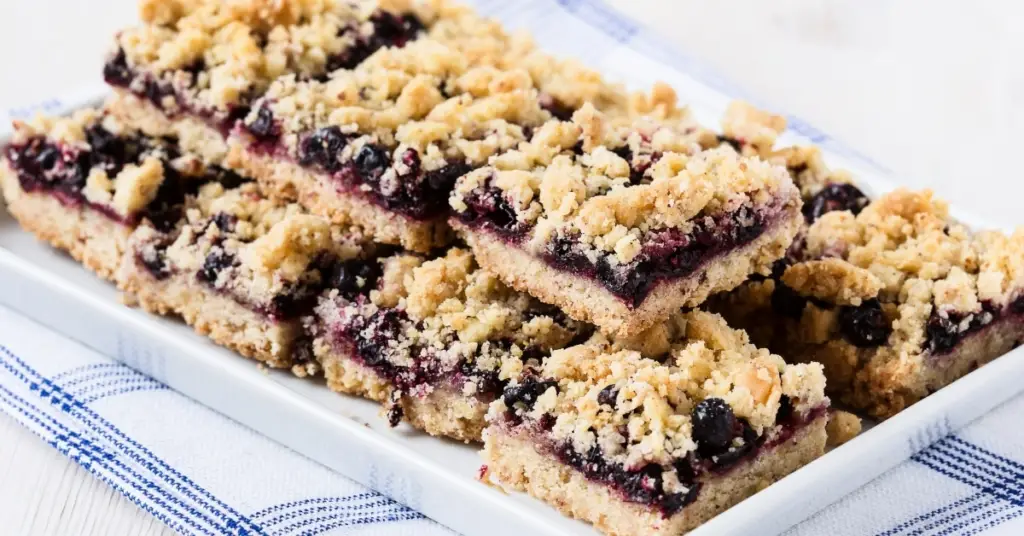

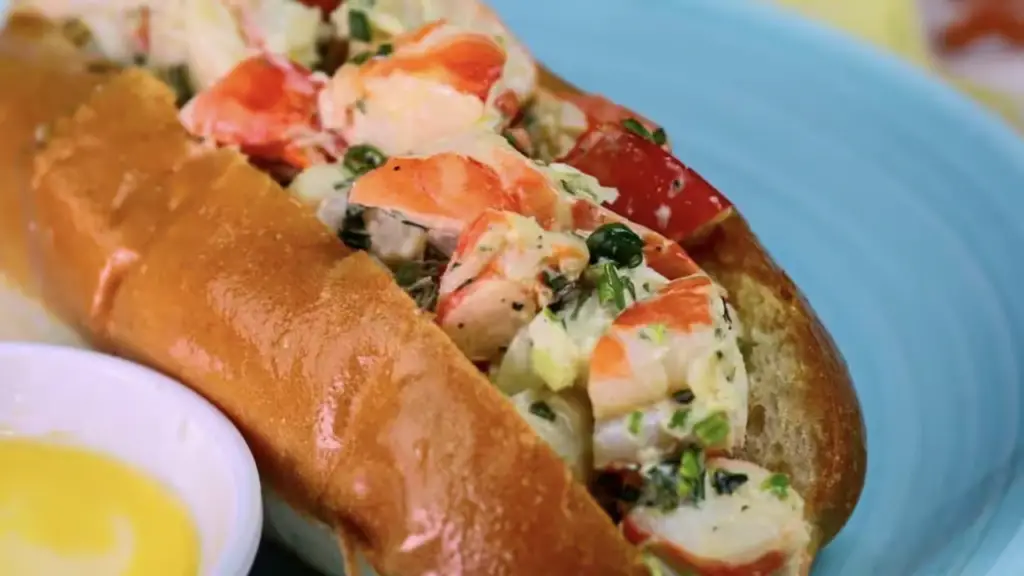

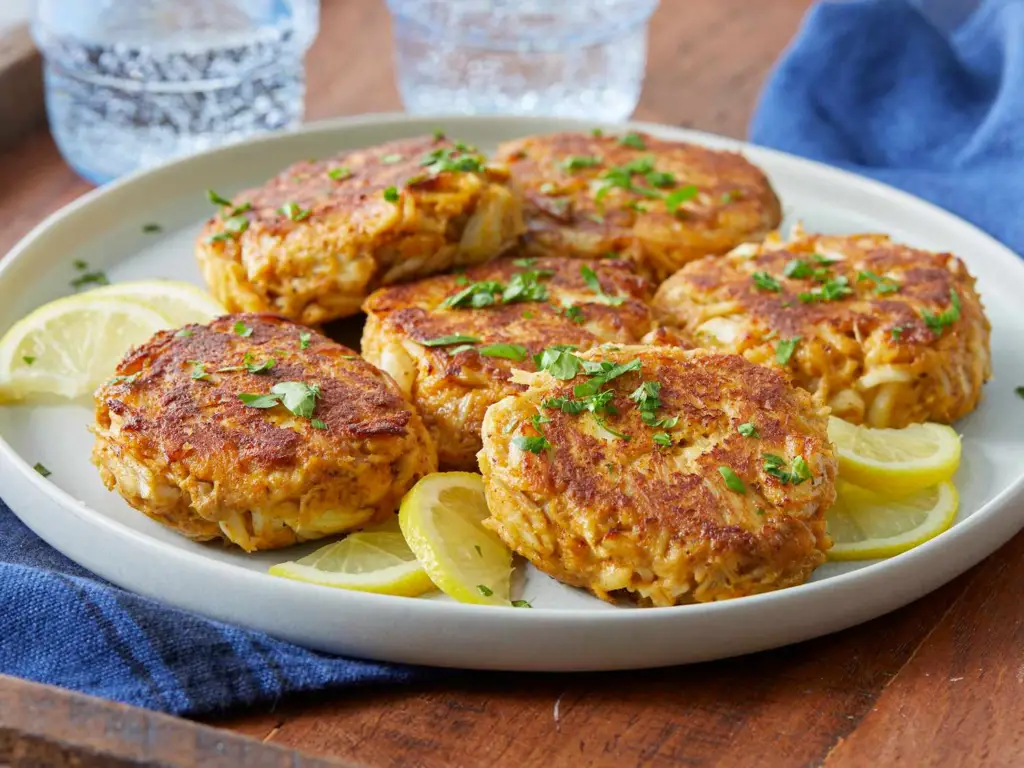
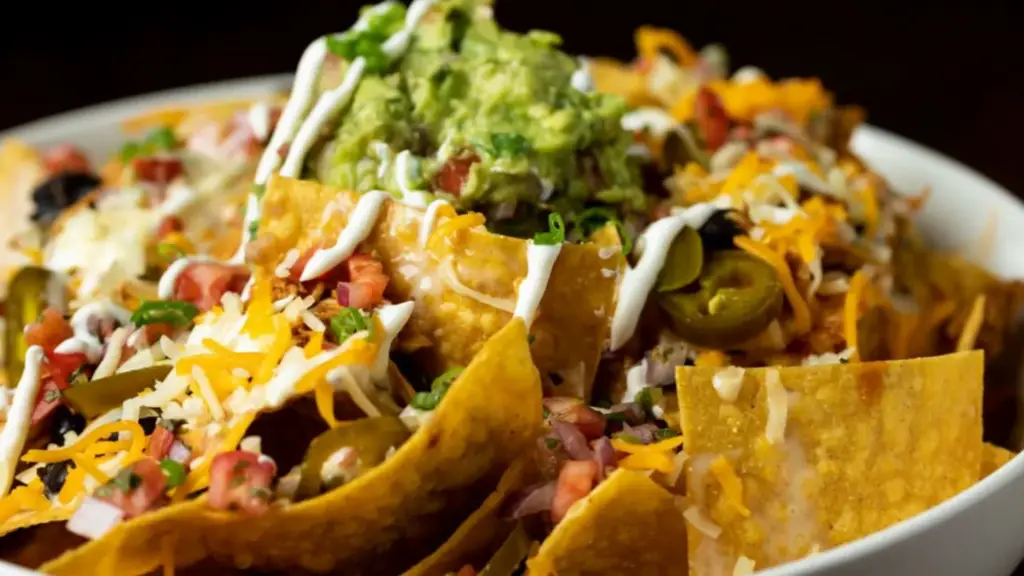




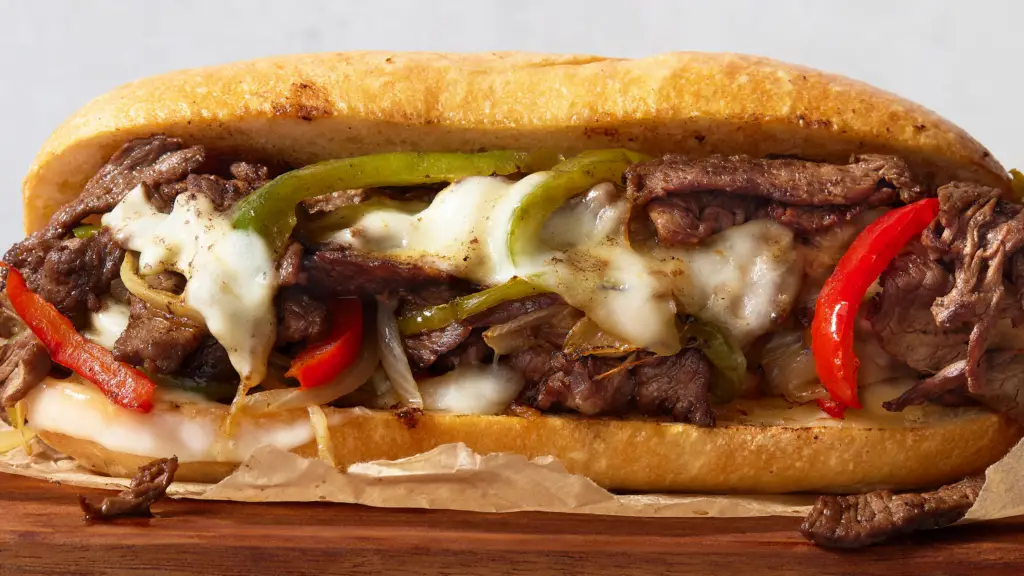
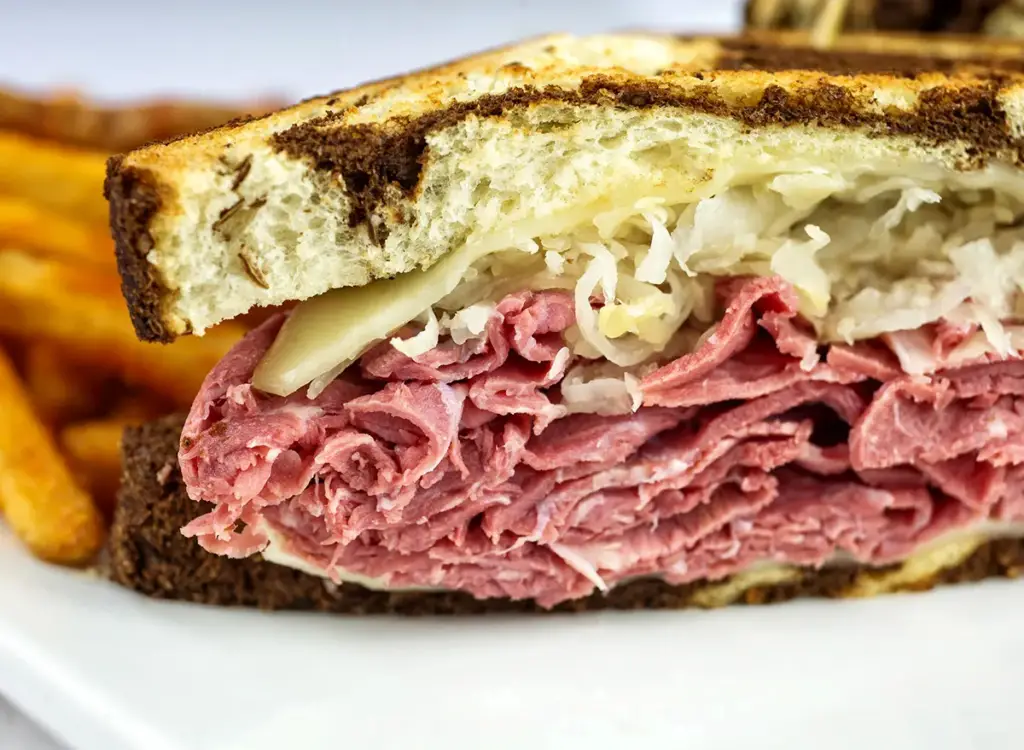
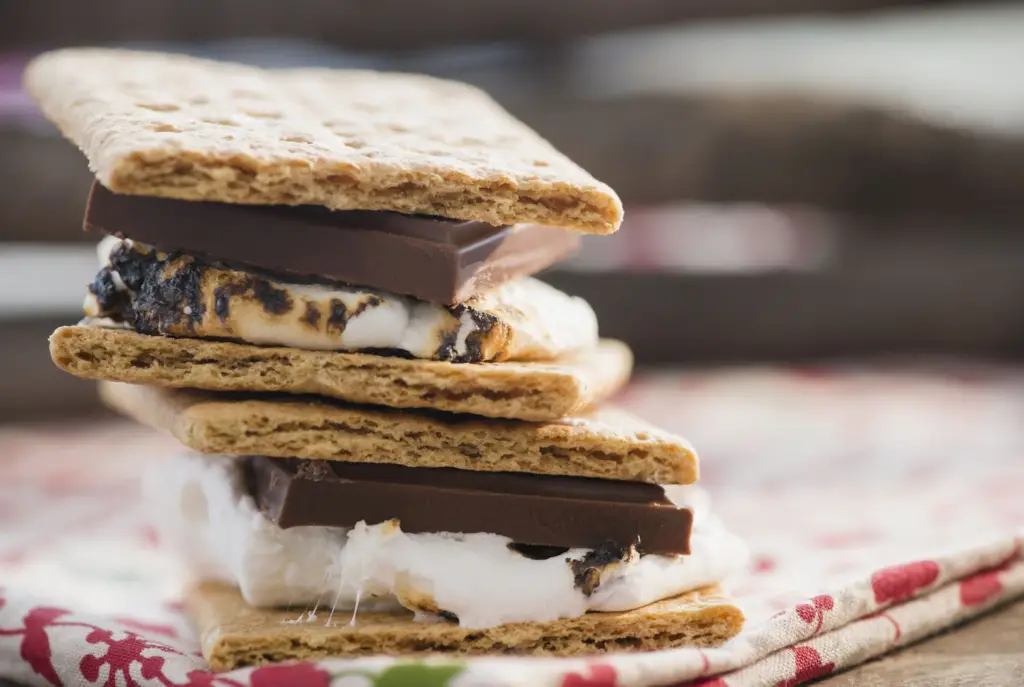


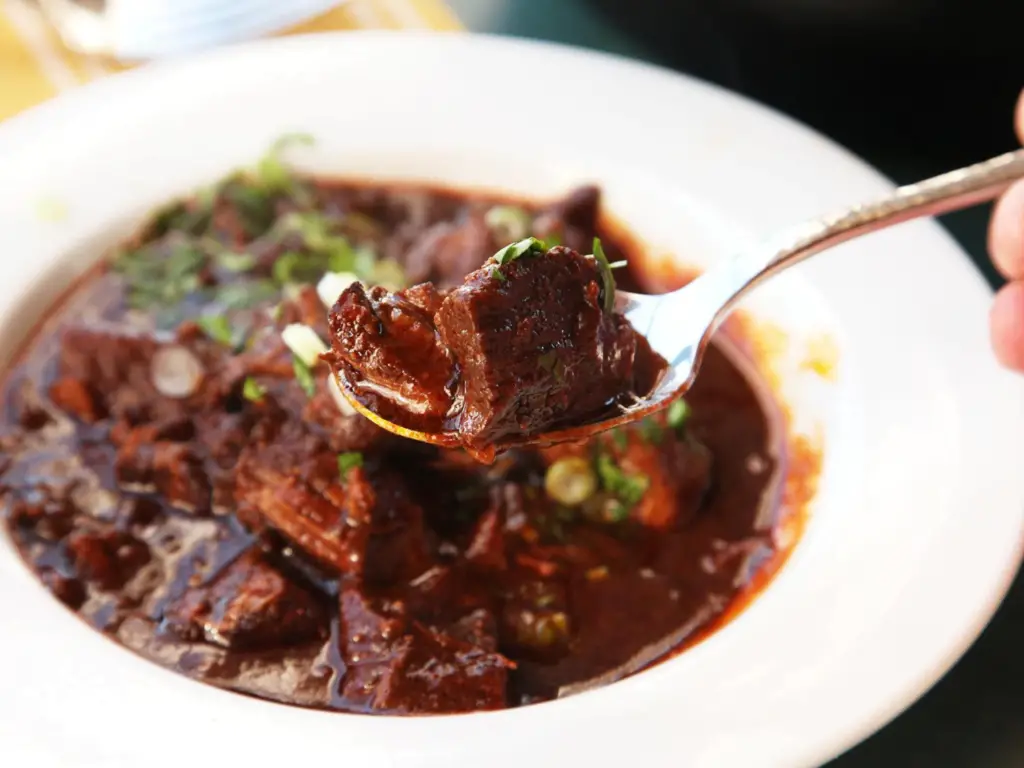

Fascinating and Amusing Facts about America

The Land of the Free and the Home of the Brave… also the land of some seriously strange laws and surprising facts? You bet! Buckle up for a whirlwind tour of Americana oddities, where quirky customs meet legislation that’ll leave you scratching your head.
No Dancing Allowed (Unless It’s Tuesdays)
Believe it or not, some towns in America have laws restricting dancing on certain days. Imagine the disappointment of planning a Friday night boogie only to find a local ordinance throwing a wrench into your groove!
It’s Illegal to Sell Your Eyeballs in California
This one might seem obvious, but you’d be surprised what needs to be explicitly outlawed. Apparently, the Golden State had to put a stop to eyeball entrepreneurship!
Cheeseburger Bill (No, Really)

In 1990, Colorado passed a bill requiring all public schools to offer cheeseburgers as a lunch option (as long as other hot dog or pizza options were also available). Thankfully, this cheesy mandate was later repealed.
Bigfoot Hunting Permits (Because Why Not?)
If you ever find yourself in California with a hankering to chase the elusive Bigfoot, you can actually purchase a special permit…just in case you manage to snag the hairy fella!
No Fireworks for Mimics (We’re Serious)

Apparently, mimicking a police officer while setting off fireworks is a big no-no in Alaska. So next time you’re celebrating Independence Day, stick to the traditional “oohs” and “ahhs” instead of impersonating the local sheriff.
No Donkey Shows Within 1000 Feet of a Church (Seriously, Why?)
Virginia takes its peace and quiet around houses of worship very seriously, with a law prohibiting donkey shows within 1000 feet of a church. We’re all for a bit of reverence, but this one leaves us scratching our heads.
Strange Marriage Laws
In Alabama, it’s illegal to marry your sibling, even if it’s just for fun. However, it’s perfectly legal to marry your first cousin. Meanwhile, in Mississippi, you can marry your cousin, but you can’t marry if you have an STD.
No Selling of Burritos in Santa Fe
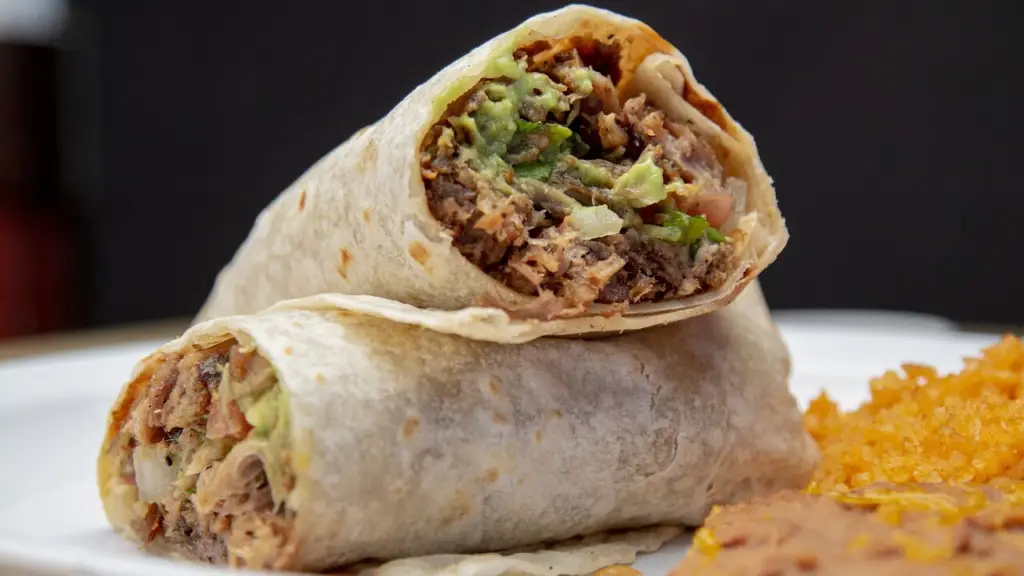
In Santa Fe, New Mexico, it’s illegal to sell “burritos” unless they contain eggs. This law dates back to the 1950s when the state’s Department of Health prohibited the selling of burritos that didn’t meet specific criteria.
The Underground Mail System

Did you know that there’s an underground mail system in the United States? In Chicago, Illinois, there’s a network of pneumatic tubes that were once used to transport mail quickly between buildings. Although no longer in use, these tubes remain a fascinating piece of American history.
The National Thanksgiving Turkey Pardon

Every year, the President of the United States participates in the National Thanksgiving Turkey Pardon ceremony, where a live turkey is “pardoned” and spared from becoming Thanksgiving dinner. This quirky tradition dates back to the 1940s and continues to capture the nation’s attention each November.
The Curious Case of the Tumbleweeds
In some states, tumbleweeds are considered a nuisance and are even regulated by law. For example, in California, it’s illegal to plant or cultivate Russian thistle, the plant commonly known as the tumbleweed.
These are just a taste of the strange and fascinating laws and facts that pepper American culture. So next time you think you know everything about the Land of Opportunity, remember – there’s always something new to discover!
The History and the Affect it Has Had on the American Cuisine

The United States is a nation built on immigration, and this rich tapestry extends far beyond people – it flavors our plates as well!
Let’s embark on a delicious adventure through American history, exploring how each era and the people who shaped it influenced the way we eat today.
From Native American Staples to European Refinement (Pre-Columbian Era to 1801)
The story begins with the Indigenous peoples who cultivated the land long before European arrival. Corn (maize), beans, squash, and wild game formed the foundation of their diet, traditions that continue to inspire modern cuisine.
European settlers in the 1600s brought wheat, dairy, and spices, leading to a fascinating fusion. Culinary ingenuity thrived during the American Revolution, with a focus on local ingredients due to wartime scarcity.
As the nation found its footing, French influence in the late 18th century brought a touch of elegance, with fine dining and elaborate meals becoming the height of fashion.
Regional Flavors Emerge and Immigrants Spice Things Up (1825-1917)
The 19th century saw the rise of regional cuisines. German immigrants introduced sausages and pretzels, while Irish immigrants popularized hearty dishes like corned beef and cabbage.
Italian influences brought pasta and pizza to the table, forever changing the American culinary landscape.
As the nation industrialized and cities boomed, convenience foods emerged alongside an influx of immigrants from Eastern Europe, Scandinavia, and China, adding new and exciting flavors.
The Progressive Era brought a focus on food safety and hygiene, while Italian, Jewish, and Mexican immigrants further enriched the American table.
The Roaring Twenties, the Great Depression, and World War II: A Culinary Rollercoaster (1918-1945)
The Jazz Age of the 1920s saw sophistication influence dining, with speakeasies offering creative cocktails alongside the social restrictions of Prohibition. The Great Depression forced Americans to be resourceful, leading to the rise of casseroles, one-pot meals, and comforting dishes.
World War II brought rationing and food scarcity, with victory gardens and home canning becoming essential practices.
Post-War Boom, Civil Rights, and the Modern Foodie (1945-Present)

The post-war era ushered in convenience foods, TV dinners, and the rise of suburbs. New waves of immigrants from Latin America and Asia introduced their unique flavors, making American cuisine even more diverse.
The Civil Rights Era saw soul food gain recognition, celebrating the culinary contributions of African Americans. Today’s food scene is a vibrant canvas of global influences, with fusion cuisine, farm-to-table movements, and a constant evolution driven by the ever-changing demographics of the nation.
Immigrant All-Stars: A Celebration of Flavor
- Italian Immigrants: We can’t imagine life without pasta, pizza, and that perfect cup of espresso – all thanks to Italian influence.
- Mexican Immigrants: Tacos, enchiladas, and the vibrant world of Mexican spices have become staples in American kitchens.
- Chinese Immigrants: Chop suey, fortune cookies, and the art of stir-frying wouldn’t be the same without Chinese culinary traditions.
- German Immigrants: From sausages and pretzels to a thriving beer culture, German immigrants have left a delicious mark.
- Irish Immigrants: Corned beef and cabbage might be synonymous with St. Patrick’s Day, but it’s a delightful reminder of Irish culinary heritage.
- Jewish Immigrants: Bagels, pastrami, and the iconic delicatessen experience are all thanks to Jewish immigrants enriching American food culture.
This is just a taste of the incredible journey American cuisine has taken. With every era and every immigrant group, our food has become more diverse, flavorful, and a true reflection of the nation’s rich tapestry.
References
How America’s Climate and Geography has influenced American Cuisine
The United States is a land of epic proportions, and its food scene reflects that grand scale! From the crashing waves of the Pacific Coast to the sun-drenched plains of the Southwest, each region boasts a unique cuisine shaped by its geography and climate.
Buckle up for a delicious adventure as we explore the bounty that America’s diverse landscapes offer!
Pacific Paradise: Fresh From the Ocean (Pacific Coast)

Stretching from California to Washington, the Pacific Coast basks in a mild climate and boasts a bounty of fresh seafood.
Dive into succulent Dungeness crab, savor melt-in-your-mouth sushi, or experience the farm-to-table movement at its finest – this region is a seafood lover’s paradise.
Southern Comfort: A Blend of Traditions (Southern States)

The warm Southern climate is ideal for growing crops like corn, okra, and sweet potatoes. Rich soil provides the perfect foundation for agriculture, and the resulting dishes reflect a beautiful blend of European, African, and Indigenous American influences.
Tuck into iconic barbecue, fluffy grits, and comforting collard greens with a side of buttery cornbread.
New England’s Bounty: Embracing the Seasons (New England)

Cold winters in New England dictate a cuisine centered around hardy, seasonal ingredients. The region takes advantage of its coastal location with delectable clam chowder and creamy lobster rolls.
Baked beans and cranberry sauce add pops of color and flavor to the table, making a New England meal a cozy and heartwarming experience.
Midwestern Feasts: Where Meatloaf Meets Bratwurst (Midwest)
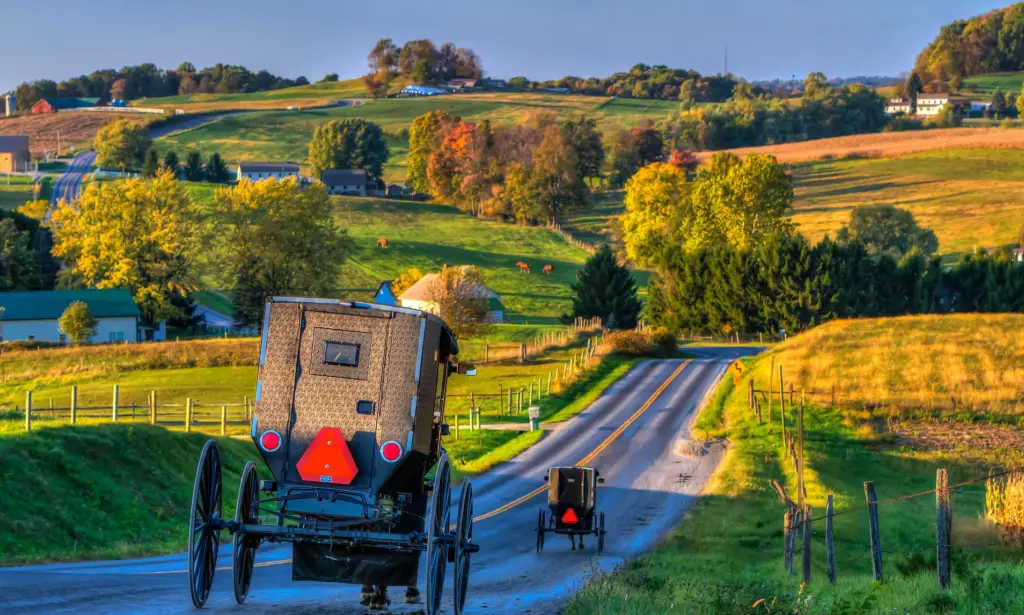
America’s heartland boasts fertile land ideal for growing grains like corn and wheat, making it a haven for meat lovers and dairy enthusiasts. Here, hearty comfort food reigns supreme.
Sink your teeth into juicy bratwurst, indulge in a deep-dish pizza, or savor a classic American hot dog. Casseroles are a staple, offering a warm and satisfying way to end a long day.
Southwest Sizzle: Tex-Mex Takes Center Stage (Southwest)

The arid climate and desert landscapes of the Southwest have led to a cuisine heavily influenced by Mexican and Native American traditions.
Tex-Mex reigns supreme here, with sizzling tacos, enchiladas, and chili con carne satisfying every craving for bold flavors and spices.
Mid-Atlantic Melange: A Melting Pot of Flavors (Mid-Atlantic)

The Mid-Atlantic region boasts a diverse culinary scene thanks to its coastal location and vibrant immigrant communities.
From New York bagels to Philadelphia cheesesteaks, Maryland crab cakes to classic deli sandwiches, there’s something to tantalize every taste bud.
Mountain Delights: High-Altitude Feasts (Mountain West)

The Rocky Mountain states offer a unique culinary experience shaped by their high altitude. Here, bison and elk replace your typical beef fare, while fresh trout adds a delightful touch to local dishes.
Don’t miss out on juicy bison burgers, huckleberry desserts bursting with mountain flavors, and a thriving craft beer scene that perfectly complements the region’s natural beauty.
Great Plains Bounty: Where Steak Reigns Supreme (Great Plains)

The vast prairies of the Great Plains are synonymous with sprawling wheat fields. As such, hearty stews and perfectly grilled steaks are a staple here.
Barbecue is another regional favorite, offering a delightful range of smoky and savory flavors.
A Feast for All Seasons: Northeast Delights (Northeast)

The Northeast experiences all four seasons in vivid detail, and its cuisine reflects this beautiful variation. Lush apple orchards provide the perfect ingredients for iconic apple pies, while the abundance of maple syrup adds a touch of sweetness to countless dishes.
Clambakes, a quintessential New England tradition, bring out the bounty of the sea, while fresh seafood remains a constant culinary delight.
Island Paradises: A Fusion of Flavors (Alaska & Hawaii)
Alaska’s cold climate is a haven for seafood lovers, with glistening salmon and king crab taking center stage. Reindeer sausage adds a unique twist to local dishes. Hawaii, on the other hand, boasts a tropical paradise where Asian and Polynesian influences create a vibrant culinary fusion.
Poke bowls filled with fresh, raw fish and vibrant luau feasts are just a taste of the island’s culinary treasures.
From the sun-drenched shores of the Pacific Coast to the rugged peaks of the Rockies, America’s diverse geography and climate have given rise to a truly remarkable culinary landscape.
This delicious tapestry is further enriched by the contributions of countless immigrant communities, making American cuisine a vibrant mosaic of traditions and flavors waiting to be explored!
References
- Taste and place: How cuisine affects geographical identity
- The Geography of Food – ArcGIS StoryMaps
- How cuisine affects geographical identity
- American Regional Cuisine: The Best Dishes from Around the Country
Understanding the Essence of American Cuisine

American cuisine is a fascinating enigma. It’s a symphony of flavors that defies easy definition. Unlike the deeply rooted culinary traditions of Europe or Asia, American food is a dynamic tapestry woven from the threads of countless cultures and traditions.
So, what exactly makes American cuisine unique? Let’s dive into the bubbling pot and discover the secret ingredients that give it such a distinctive flavor.
A Celebration of Diversity: A Culinary Remix
Imagine a kitchen buzzing with activity. On one counter, a pot of simmering gumbo whispers tales of African American influence. Nearby, the aroma of freshly baked apple pie evokes the comfort food traditions of European settlers.
This is the essence of American cuisine – a vibrant fusion of flavors brought by waves of immigrants over centuries. Italian immigrants gifted us pasta and pizza, while Mexican influences gave us the joys of tacos and burritos.
From German sausages to Chinese stir-fries, American food is a delicious remix of global traditions, constantly evolving and adapting.
Resourcefulness and Innovation: Making Do With What You Have
The American spirit of innovation extends to the kitchen table. Early settlers, faced with unfamiliar lands and limited resources, had to be resourceful. This led to the creation of iconic dishes like succotash (a delightful mix of corn and lima beans) and peanut butter and jelly sandwiches (a testament to using readily available ingredients).
This tradition of culinary resourcefulness continues today, with chefs across the country constantly pushing boundaries and creating new flavor combinations.
Regional Gems: A Celebration of Place
Travel across America, and your taste buds will embark on a delightful journey. The rich gumbo simmering in Louisiana whispers a different story than the creamy clam chowder enjoyed on the chilly shores of New England.
From the tangy barbecue traditions of the South to the fresh seafood specialties of the Pacific Coast, American cuisine is a celebration of regional pride. Local ingredients and cooking techniques take center stage, creating a unique culinary identity for each corner of the country.
The Art of Convenience: A Fast-Paced Palate
America is a nation on the go, and its food reflects that fast-paced lifestyle. From the invention of the hamburger to the rise of fast-food chains, American cuisine has embraced convenience.
This doesn’t mean a compromise on flavor, though. American chefs have mastered the art of creating delicious and satisfying meals that can be enjoyed on the run. Food trucks offer gourmet delights, while grab-and-go salads and wraps cater to busy schedules.
A Constant Evolution: A Culinary Canvas
American cuisine is not a static museum exhibit; it’s a living, breathing entity that thrives on change. New waves of immigration continue to introduce exciting flavors, while chefs experiment with global influences and local ingredients.
The farm-to-table movement highlights the importance of fresh, seasonal produce, while food trucks and pop-up restaurants offer innovative dining experiences. American cuisine is a constantly evolving canvas, forever adapting to reflect the nation’s ever-changing cultural landscape.
American cuisine is a unique and vibrant tapestry woven from the threads of countless cultures, traditions, and innovations. It’s a celebration of diversity, resourcefulness, and a love for bold flavors.
So, next time you sit down to a meal in the USA, take a moment to savor the rich history and cultural significance hidden in every delicious bite.
American Culinary Traditions
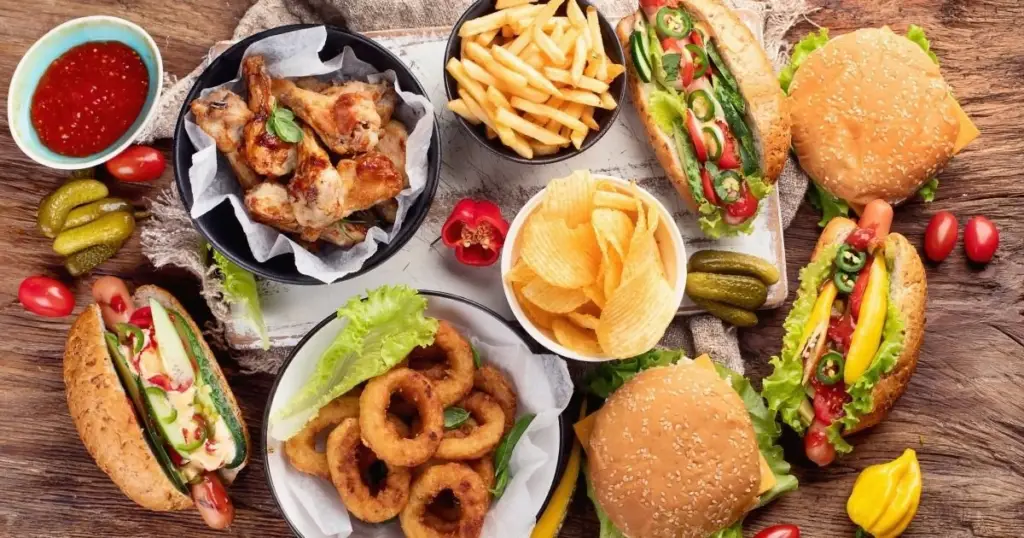
America’s culinary landscape is as diverse as its people and landscapes. From coast to coast, the nation boasts a rich tapestry of culinary traditions that reflect its history, cultural heritage, and regional flavors.
Let’s take a journey through the melting pot of American cuisine, from classic comfort foods to innovative culinary creations.
A Fusion of Cultures
America’s culinary traditions are deeply rooted in the fusion of diverse cultures that have shaped the nation’s history. Indigenous ingredients and cooking techniques, brought by Native American tribes, laid the foundation for early American cuisine.
European settlers introduced dishes like pot roast, apple pie, and fried chicken, while African slaves contributed flavors and cooking methods that continue to influence Southern cuisine today.
Regional Flavors
One of the most fascinating aspects of American cuisine is its regional diversity. Each region of the country boasts its own unique flavors and culinary specialties, shaped by factors like geography, climate, and immigration patterns.
In the South, you’ll find soulful dishes like shrimp and grits, barbecue ribs, and gumbo. The Northeast is known for its clam chowder, lobster rolls, and hearty New England boiled dinners. In the Midwest, comfort foods like casseroles, hot dishes, and hearty meat pies reign supreme.
Meanwhile, the West Coast embraces fresh seafood, vibrant produce, and innovative culinary trends.
Iconic Dishes
Certain dishes have become iconic symbols of American cuisine, beloved by locals and celebrated around the world. Classics like hamburgers, hot dogs, and apple pie are synonymous with American comfort food.
Southern favorites like fried chicken, biscuits and gravy, and pecan pie evoke images of hospitality and down-home cooking. Meanwhile, Tex-Mex cuisine, with its bold flavors and hearty portions, has become a staple of American dining, from tacos and enchiladas to fajitas and nachos.
Culinary Innovations
In addition to its traditional fare, America is also a hotbed of culinary innovation and experimentation. The country’s diverse population and access to global ingredients have fueled a thriving food scene, with chefs pushing the boundaries of flavor and technique.
From farm-to-table dining and gourmet food trucks to avant-garde tasting menus and fusion cuisine, America’s culinary landscape is constantly evolving, reflecting the creativity and ingenuity of its chefs and food artisans.
Conclusion
America’s culinary traditions are a reflection of its rich history, cultural diversity, and spirit of innovation. From coast to coast, the nation’s food scene offers a tantalizing array of flavors, ingredients, and culinary experiences that celebrate its past while embracing the future.
Whether you’re craving classic comfort foods, regional specialties, or cutting-edge cuisine, America has something to satisfy every palate.
References
- Smith, A. F. (2007). The Oxford Companion to American Food and Drink. Oxford University Press.
- Edge, J. T. (2017). The Potlikker Papers: A Food History of the Modern South. Penguin Books.
- Mintz, S. (2013). The Oxford Companion to Sugar and Sweets. Oxford University Press.
- Ziegelman, J., & Coe, A. (2012). A Square Meal: A Culinary History of the Great Depression. HarperCollins.
Exploring America’s Ingredients: The Flavors of American Cuisine
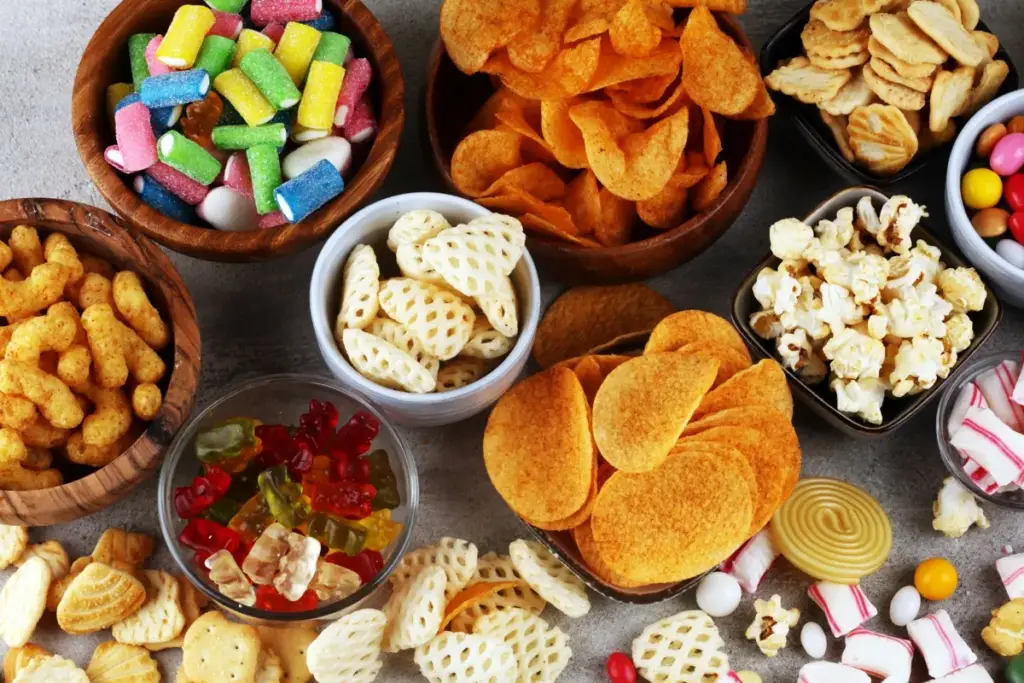
Imagine a pantry overflowing with the vibrant colors and bold flavors of a nation. That’s what you get when you peek into the treasure chest of American ingredients! Unlike countries with deeply rooted culinary traditions, American cuisine boasts a fascinating diversity, drawing inspiration from all corners of the globe.
So, let’s unlock this pantry door and embark on a culinary adventure to discover the unique ingredients that make American food sing!
From Native American Staples to Modern Favorites
Long before European settlers arrived, Native Americans cultivated the land, leaving a lasting impact on American cuisine. Corn (maize) takes center stage, a versatile ingredient inspiring everything from fluffy tortillas to sweet popcorn.
Beans, another Native American staple, add protein and heartiness to countless dishes. Squash, pumpkins, and wild rice round out this legacy, forming the foundation for many regional specialties.
European Influences: A Touch of Refinement
European settlers brought their own culinary treasures, enriching the American pantry. Wheat flour arrived, paving the way for fluffy breads, pastries, and the iconic American pie crust.
Dairy products like milk, butter, and cheese added richness and creaminess to dishes.
Spices like black pepper, cinnamon, and nutmeg introduced a touch of European refinement, forever changing the flavor profile of American cuisine.
A Melting Pot of Immigrant Delights
Waves of immigration over centuries have painted America’s culinary landscape with vibrant colors. Italian immigrants brought tomatoes, the base for countless sauces and pizzas. Irish immigrants introduced potatoes, a versatile ingredient enjoyed mashed, roasted, or fried.
Chinese immigrants popularized soy sauce, ginger, and a love for stir-fries, forever changing the way Americans cook vegetables. These are just a few examples – from German sausages to Mexican chiles, American ingredients reflect the rich tapestry of cultures that have called this nation home.
Regional Gems: Celebrating Local Bounty
Travel across the United States, and you’ll discover that the pantry staples change with the scenery. The tangy barbecue sauces of the South rely heavily on brown sugar and molasses. Fresh seafood defines coastal regions, with Maine lobsters and Dungeness crabs taking center stage.
Peanuts, a Southern staple, are used in everything from savory dishes to decadent peanut butter desserts. This focus on local and seasonal ingredients creates a unique culinary identity for each corner of the country.
Innovation on the Menu: Embracing Modernity
American cuisine isn’t afraid to embrace the new. Processed foods like peanut butter and breakfast cereals were born in American kitchens, offering convenient and delicious options. The rise of supermarkets has made a global bounty readily available, allowing home cooks to experiment with international flavors.
Food trucks and pop-up restaurants showcase innovative uses of ingredients like sriracha mayo and artisanal cheeses, ensuring American cuisine is constantly evolving.
Mastering American Cuisine Cooking Techniques
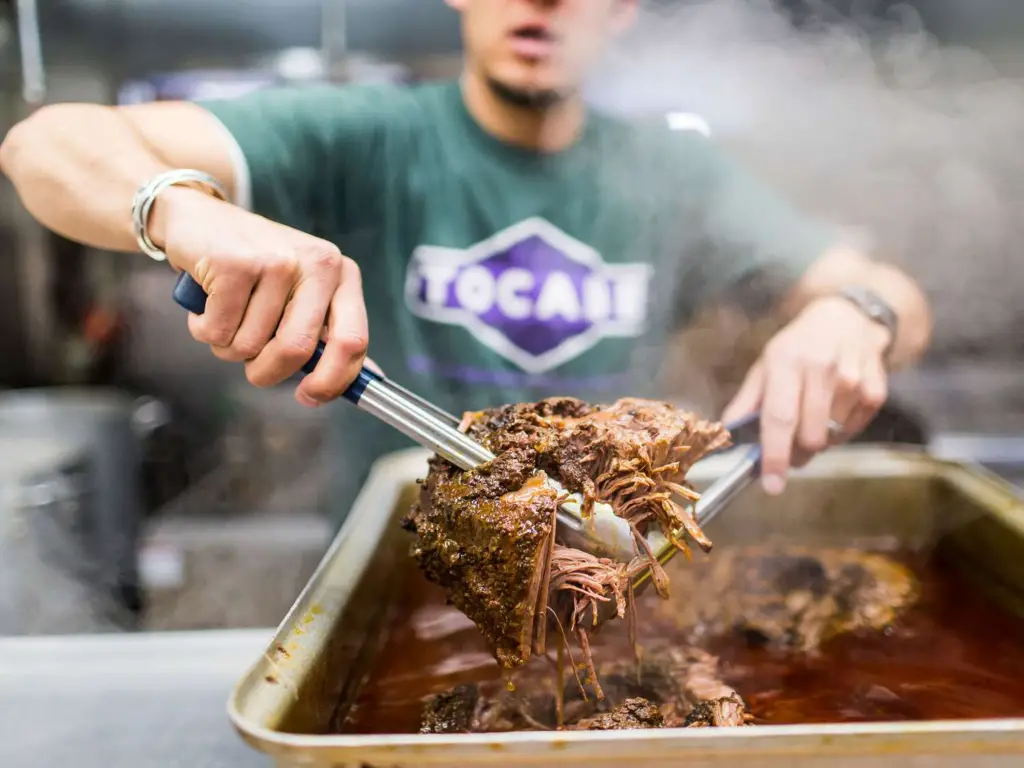
America’s culinary landscape is not just defined by its diverse flavors and ingredients but also by its unique cooking techniques and methods. From traditional Southern barbecue to innovative farm-to-table cuisine, American chefs and home cooks alike employ a wide range of cooking techniques to create dishes that tantalize the taste buds and celebrate the nation’s culinary heritage.
Let’s delve into some of the special cooking techniques that make American cuisine stand out:
Barbecue and Smoking
Barbecue is a quintessential American cooking technique that dates back centuries and holds a special place in the hearts of many.
Whether it’s slow-smoked ribs in the South, tender brisket in Texas, or succulent pulled pork in the Carolinas, barbecue involves slow-cooking meat over low heat for hours, allowing the flavors to develop and the meat to become tender and infused with smoky goodness.
Wood chips or chunks, such as hickory, mesquite, or applewood, are often used to impart flavor, resulting in a mouthwatering culinary experience that’s uniquely American.
Deep Frying
Deep frying is another beloved cooking technique in America, known for producing crispy, golden-brown delights that are hard to resist.
From Southern fried chicken and crispy French fries to indulgent doughnuts and crunchy onion rings, deep-frying involves submerging food in hot oil until it’s cooked to perfection.
The high temperature of the oil creates a crispy exterior while sealing in moisture, resulting in irresistible textures and flavors that have become iconic in American cuisine.
Grilling
Grilling is a popular cooking method in America, especially during the summer months when backyard barbecues and cookouts are in full swing. Whether it’s burgers, hot dogs, steaks, or vegetables, grilling involves cooking food over an open flame or hot coals, imparting a distinctive charred flavor and smoky aroma.
Grilling is not only a convenient and efficient way to cook but also adds depth and complexity to dishes, making it a favorite cooking technique for outdoor gatherings and celebrations.
Sous Vide
Sous vide, French for “under vacuum,” has gained popularity in recent years as a cooking technique that produces consistently tender and flavorful results.
This method involves vacuum-sealing food in a plastic bag and cooking it in a water bath at a precise temperature for an extended period.
Sous vide cooking allows for precise control over temperature and ensures even cooking throughout, resulting in perfectly cooked meats, fish, and vegetables with minimal effort and maximum flavor.
Smoking and Curing
Smoking and curing are age-old preservation techniques that have been used for centuries to preserve and flavor meats, fish, and other foods. Whether it’s cold-smoked salmon, smoked sausages, or cured ham, these techniques involve exposing food to smoke and salt to enhance flavor and extend shelf life.
Today, smoking and curing are not only used for preservation but also to add depth and complexity to dishes, creating signature flavors that are unmistakably American.
Traditional American Food
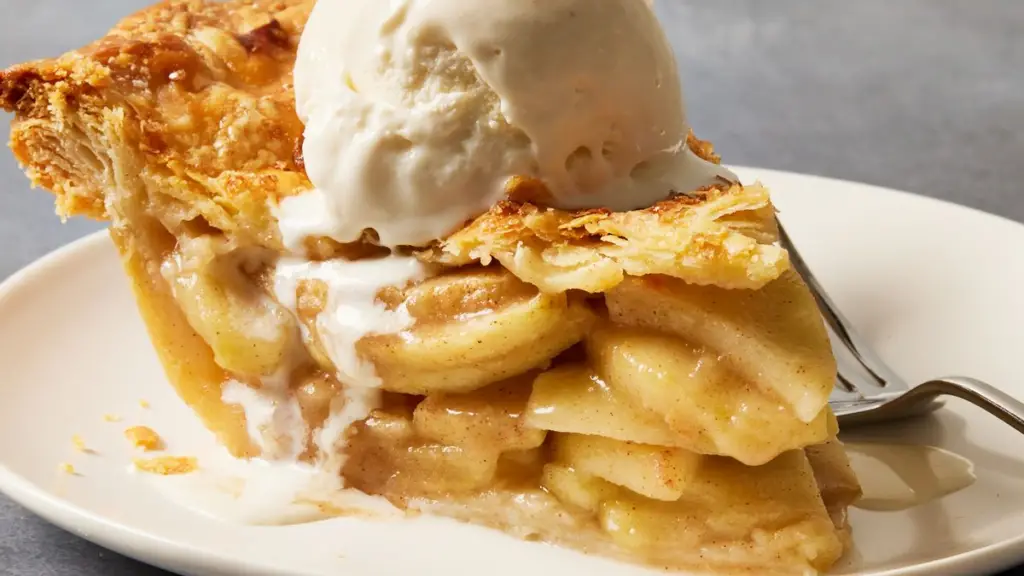
American cuisine might be a melting pot of global influences, but it also boasts a rich collection of traditional dishes that tell the story of the nation’s history and heritage.
From comfort food classics to celebratory feasts, these 5 iconic American meals offer a delicious journey through time:
Apple Pie: A Slice of Americana (and a Patriotic Symbol)
Few things are as American as apple pie. This quintessential dessert features a flaky, buttery crust encasing tender, spiced apples. While its origins can be traced back to Europe, apple pie became a symbol of American self-sufficiency and hospitality.
The ease of finding apples throughout the country, and the simplicity of the recipe, made it a staple on family tables and a celebratory dessert at potlucks and holidays.
Barbecue: A Regional Affair Steeped in History (From Carolina to Texas)
Barbecue isn’t just a meal; it’s an experience. Regional variations abound, each boasting its own unique cooking style and flavor profile. In the Carolinas, slow-cooked pork shoulder bathed in a tangy vinegar sauce reigns supreme.
Texas celebrates barbecue with slow-smoked beef brisket, often seasoned with a simple rub and served with savory sides. Memphis, Tennessee, is known for its dry-rubbed ribs, while Kansas City offers a sweet and smoky barbecue sauce that tantalizes the taste buds.
Regardless of the regional flair, barbecue embodies the American tradition of slow cooking, gathering around a shared meal, and enjoying good company.
Gumbo: A Louisiana Legacy (A Fusion of French, African, and Choctaw Influences)
Gumbo is a simmering pot of Louisiana soul, a rich stew that reflects the state’s diverse heritage. French roux forms the base, a savory blend of flour and fat. African influences come through in the use of okra, while Choctaw people introduced filé powder, a sassafras thickening agent.
Shrimp, chicken, sausage, and vegetables all take center stage in a gumbo pot, creating a hearty and flavorful dish that is a true celebration of Louisiana’s cultural tapestry.
Fried Chicken: A Comfort Food Classic (From Soul Food to Fast Food)
Crispy on the outside, juicy and tender on the inside – fried chicken is a beloved comfort food across America. Its origins can be traced back to West Africa, brought to the American South by enslaved people.
Dredged in seasoned flour or batter, then fried to golden perfection, fried chicken became a staple in Soul Food cuisine. Today, it enjoys widespread popularity, from fast-food chains to upscale restaurants, offering a delightful combination of simplicity and satisfying flavor.
Thanksgiving Feast: A Celebration of Harvest and Gratitude
No discussion of traditional American food is complete without mentioning Thanksgiving dinner. This celebratory meal traces its roots back to a harvest festival shared between the Wampanoag people and English colonists in 1621.
Today, Thanksgiving revolves around a roasted turkey as the centerpiece, often accompanied by mashed potatoes, gravy, cranberry sauce, stuffing, and an assortment of autumnal vegetables. Thanksgiving dinner is more than just a meal; it’s a time for families and friends to come together, express gratitude, and celebrate the bounty of the harvest.
These 5 iconic dishes represent just a glimpse into the vast and delicious world of traditional American cuisine. Each bite tells a story, reflecting the nation’s history, cultural influences, and love for good food shared with loved ones. So, the next time you have the opportunity, delve into these culinary classics and experience a taste of American tradition.
Exploring American Street Food

In the hustle and bustle of American cities, there’s a vibrant culinary scene brewing right on the streets. Food trucks, carts, and stands beckon with enticing aromas and a dazzling array of flavors.
Forget the greasy stereotypes – American street food has evolved into a delicious adventure, offering a taste of global influences and local favorites at an affordable price.
Let’s grab a napkin and dive into this dynamic world, exploring 5 common street food finds and the cities that take the cake (or should we say, taco?) for the most vibrant scenes.
5 Street Food Staples to Curb Your Cravings
- The All-American Hot Dog: A true American icon, the hot dog is a blank canvas for flavor exploration. From the classic Chicago-style with its poppy seed bun, sport peppers, and neon relish to the adventurous lobster rolls on the East Coast, hot dogs are a delicious and portable way to experience regional flair.
- Tacos, Glorious Tacos: Mexican influences have taken America by storm, and tacos are a street food staple. Al pastor (marinated pork), carne asada (grilled steak), and carnitas (slow-cooked braised pork) are just a few of the fillings you might find nestled in warm corn tortillas. Top them off with fresh salsa, cilantro, and a squeeze of lime for a flavor explosion on the go.
- The Humble Slice: Pizza by the slice is a New York City institution, but this street food gem can be found in most major cities. Thin-crust or deep-dish, cheese or piled high with toppings, a slice of pizza is a satisfying and budget-friendly meal (or a perfect late-night snack).
- Gourmet on the Go: Food trucks have revolutionized street food, offering everything from gourmet burgers and artisan grilled cheese to globally-inspired dishes like Korean BBQ tacos and Vietnamese Bahn Mi sandwiches. These mobile kitchens are a great way to experience innovative flavor combinations and support local chefs.
- Sweet Treats: No street food adventure is complete without a sweet ending. From hand-rolled ice cream with endless topping options to decadent churros dusted with cinnamon sugar, American street food caters to your sweet tooth as well.
Cities Where Street Food Reigns Supreme
- Los Angeles, California: A melting pot of cultures translates to a diverse street food scene in LA. From Korean BBQ tacos to gourmet vegan options, there’s something for everyone.
- Portland, Oregon: This city is a haven for food trucks, boasting hundreds of mobile kitchens offering everything from innovative takes on comfort food to international specialties.
- New York City, New York: The Big Apple is a classic street food destination. From iconic hot dog stands to halal carts offering flavorful rice bowls, the city that never sleeps offers endless options.
- Austin, Texas: Texas takes its food seriously, and street food is no exception. Expect to find juicy brisket tacos, breakfast tacos filled with eggs and chorizo, and inventive fusion dishes alongside classic American fare.
- New Orleans, Louisiana: Beignets dusted with powdered sugar, fluffy po’boys overflowing with savory fillings – New Orleans street food captures the city’s vibrant spirit and rich culinary heritage.
Conclusion
American street food is more than just a quick bite; it’s a cultural experience. So, the next time you’re exploring a city, ditch the fancy restaurants and embrace the energy of the streets.
With a variety of flavors to tempt your taste buds and a vibrant atmosphere to soak in, American street food offers a delicious and affordable way to truly experience the culinary heartbeat of a city.
The Most Popular the American Food Recipes

From soul food classics to melt-in-your-mouth desserts, American cuisine offers something to tantalize every taste bud. Here are 10 of the most popular American recipes you simply have to try:
Barbecue
This isn’t just grilled meat; it’s a slow-cooked celebration of smoky flavors. Different regions boast their own styles, from Carolina’s tangy vinegar sauce to Texas’ slow-smoked brisket.
Cheeseburger
This American icon features a juicy all-beef patty nestled between a toasted bun, with melted cheese, crisp lettuce, tomato, and your favorite toppings. It’s a customizable classic enjoyed by all ages.
Apple Pie
A symbol of Americana, apple pie features a flaky crust filled with tender, spiced apples. It’s the perfect ending to a comforting meal or a delightful dessert on its own.
Fried Chicken
Crispy on the outside, juicy and tender on the inside, fried chicken is a beloved comfort food. Dredged in seasoned flour or batter, it’s a staple in soul food cuisine and a popular fast-food option.
Mac and Cheese
This creamy, cheesy pasta dish is a childhood favorite for many. Countless variations exist, from the classic baked mac and cheese to gourmet versions loaded with lobster or truffle oil.
Chocolate Chip Cookies
These soft and chewy cookies studded with melty chocolate chips are a quintessential American treat. Enjoy them warm from the oven with a cold glass of milk for the ultimate comfort food experience.
Pizza
Whether it’s a New York-style thin crust or a deep-dish Chicago favorite, pizza is a crowd-pleaser. Endless topping combinations allow for customization, making it a perfect meal for sharing with friends and family.
Gumbo
This hearty Louisiana stew is a melting pot of flavors. French roux forms the base, while African and Choctaw influences come through in the use of okra and filé powder. Shrimp, chicken, sausage, and vegetables all simmer together, creating a delicious and satisfying dish.
Nachos
A Tex-Mex staple, nachos are a mountain of tortilla chips piled high with melted cheese, beans, salsa, and your favorite toppings. This shareable appetizer or main course is perfect for game nights or casual gatherings.
Texas Chili
This hearty stew features ground beef, beans, tomatoes, and a blend of spices, simmered together for a rich and flavorful chili. Top it with shredded cheese, sour cream, and chopped onions for a satisfying meal.
This is just a taste of the incredible diversity American cuisine has to offer. So, the next time you’re planning a meal, consider trying one of these iconic dishes. You won’t be disappointed!
What are the Health Implications of American Cuisine?

American cuisine is a delicious paradox. It’s a vibrant tapestry woven from the culinary traditions of countless cultures, offering a kaleidoscope of flavors unlike any other. Yet, this very indulgence comes with a health cost.
Let’s delve into the fascinating – and sometimes conflicting – relationship between American food and our well-being.
The Looming Shadow of Chronic Disease
Non-communicable diseases (NCDs), like diabetes and heart disease, are a growing concern worldwide. These chronic conditions claim millions of lives each year, with cardiovascular disease (CVD) being the leading culprit, responsible for over 32% of global deaths.
Several factors contribute to rising NCD rates, including urbanization, lack of physical activity, and most importantly, unhealthy diets. In the United States, for example, nearly 25 million adults have high cholesterol, a significant risk factor for CVD.
Worryingly, even children and adolescents are not spared, with 7% showing signs of high cholesterol.
American Cuisine: A Double-Edged Sword
So, how does American cuisine play into this health dilemma? On the one hand, it offers a wealth of deliciousness. The multicultural heritage of the US translates to a diverse range of ingredients, from fresh, seasonal produce to unique regional specialties.
The “farm-to-table” movement is gaining momentum, encouraging a return to fresh, local ingredients. Chefs are also getting creative, using global influences to create healthier adaptations of classic dishes.
However, the convenience factor often takes center stage. Fast food chains and processed snacks are ubiquitous, tempting us with sugary sodas, salty treats, and calorie-laden delights. Portion sizes tend to be supersized, making it easy to overeat.
This emphasis on speed and ease can have a negative impact on our health.
Striving for Balance: A Healthier Future on Our Plates
The key lies in striking a balance. We can still savor the incredible flavors of American cuisine while making informed choices. Moderation is key, and understanding how our food choices impact our health empowers us to make better decisions.
The good news? The tide is turning. A growing segment of the population is embracing mindful eating, prioritizing fresh ingredients and healthier cooking methods.
American cuisine has the potential to be both delicious and nutritious. By acknowledging the health challenges and making conscious choices, we can chart a course towards a healthier future, one flavorful bite at a time.
References
- World Cancer Research Fund: NCDs and diet
- Harvard Health: Traditional Southern diet and heart disease
- MU Health: Eating Healthy Across Cultural Cuisines
America’s National Dish
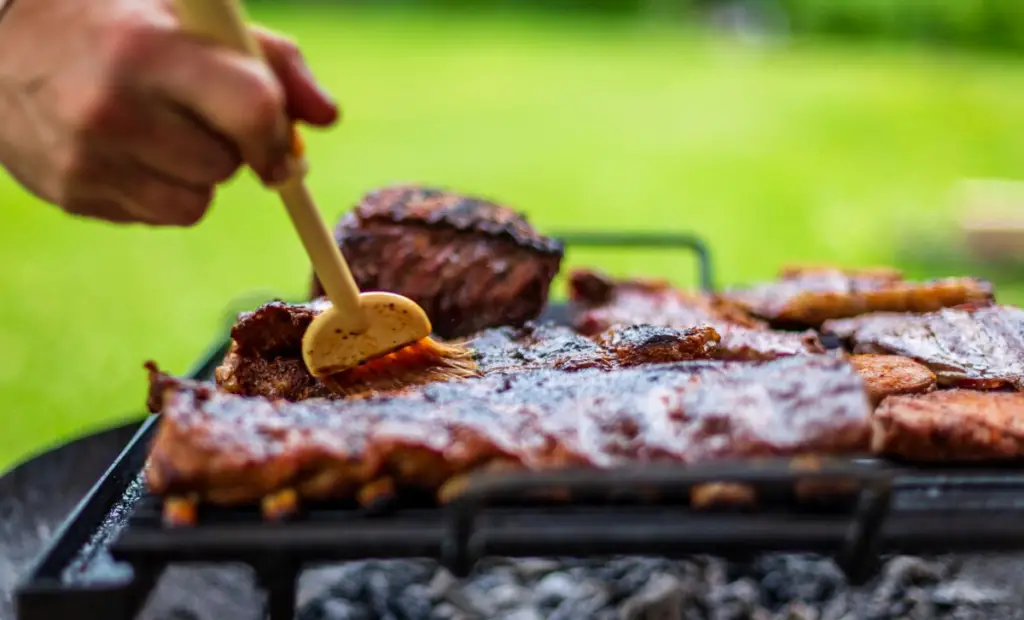
The United States, a nation built by immigrants from all corners of the globe, boasts a cuisine as diverse as its population. Unlike countries with deeply rooted culinary traditions, America lacks a single, definitive national dish.
This absence, however, sparks a delightful debate – what truly captures the essence of American food? So, grab a fork and join us as we explore the contenders for the title of America’s National Dish!
In the Running: Classic Comfort Food
Some argue that iconic comfort food deserves the crown. Dishes like apple pie, a quintessential symbol of Americana, evoke feelings of nostalgia and warmth. Its flaky crust encasing tender, spiced apples is a timeless dessert enjoyed across generations.
Fried chicken, crispy on the outside and juicy within, represents another contender. Its roots trace back to West Africa, brought to America by enslaved people, and today it’s a beloved staple in Soul Food cuisine and a fast-food favorite.
Regional Specialties: A Celebration of Place
Others champion the rich tapestry of regional specialties. Barbecue, slow-cooked and bursting with smoky flavor, is a true American experience, but its variations define regions.
Carolina’s tangy vinegar sauce clashes deliciously with Texas’ slow-smoked brisket, each embodying distinct cultural influences. Gumbo, a hearty stew simmering in Louisiana, reflects the state’s diverse heritage with its French roux base infused with African and Choctaw influences.
Modernity on the Menu: Innovation Takes Center Stage
The ever-evolving nature of American cuisine also throws contenders into the ring. The rise of food trucks and artisanal eateries showcases innovative flavor combinations, pushing boundaries and constantly redefining American food.
These culinary rebels might just create the next iconic dish that captures the nation’s spirit.
The Beauty of Diversity: A Celebration of Choice
Perhaps the true beauty of American cuisine lies not in a single dish, but in its incredible diversity. From the comfort classics that bring back cherished memories to the innovative creations on the cutting edge, American food is a reflection of the nation’s multicultural heritage and ever-evolving spirit.
So, is there a National Dish?
The answer is a resounding “maybe!” The beauty of American cuisine lies in its lack of a single definition. It’s a dynamic tapestry woven from countless traditions, a celebration of regional specialties, and a canvas for ongoing culinary innovation.
So, next time you sit down to a meal in the US, embrace the delightful absence of a national dish. Instead, savor the rich flavors and cultural stories embedded in every delicious bite.
Great American Food Recipes to Try at Home

Craving a taste of the USA? You don’t need a plane ticket to embark on a delicious culinary adventure! American cuisine, a vibrant mosaic of global influences and regional specialties, offers a world of flavors to explore right from your own kitchen.
In this chapter, we’ll be your culinary compass, guiding you through easy-to-follow recipes for some of America’s most iconic dishes. From the comforting warmth of apple pie to the smoky allure of barbecue, we’ll have you whipping up restaurant-worthy meals that will tantalize your taste buds and transport you to the heart of American food culture.
So, grab your apron, preheat your oven, and get ready to discover the delectable secrets behind America’s most beloved dishes. We guarantee it’ll be a flavor journey you won’t forget!
American Food – Barbecue

America’s love affair with barbecue runs deep, with roots tracing back to Native American cooking techniques and early colonial settlers. Today, barbecue is synonymous with outdoor gatherings, family reunions, and backyard cookouts across the country.
Each region of the United States has its own unique barbecue style, from tangy and sweet sauces in the South to dry rubs and slow-cooked meats in the Midwest. Let’s dive into the history, ingredients, and recipe for this quintessential American dish.
American Food – Barbecue Ingredients:
- 4 pounds of pork ribs (baby back or spare ribs)
- 1 cup barbecue sauce
- 2 tablespoons dry rub seasoning (paprika, brown sugar, salt, pepper, garlic powder, onion powder)
- Wood chips (hickory, mesquite, applewood) for smoking
American Food – Barbecue Recipe:
Preparation:
- Preheat the Grill: Heat your grill to 225°F to 250°F for indirect cooking.
- Prepare the Ribs: Remove the membrane from the back of the ribs and trim any excess fat.
- Season the Ribs: Rub the dry rub seasoning all over the ribs, covering them evenly.
- Soak Wood Chips: If using wood chips for smoking, soak them in water for at least 30 minutes.
Cooking:
- Smoke the Ribs: Place the wood chips over the coals or in a smoker box for a gas grill. Place the ribs on the grill away from direct heat and close the lid. Cook for 2 to 3 hours, maintaining a consistent temperature and adding more wood chips as needed for smoke.
- Wrap the Ribs (Optional): After the first 2 hours of cooking, wrap the ribs tightly in aluminum foil to keep them moist and tender. Return them to the grill and continue cooking for another hour.
- Glaze with Barbecue Sauce: Brush the ribs with barbecue sauce during the last 30 minutes of cooking, allowing the sauce to caramelize and create a sticky glaze.
- Check for Doneness: The ribs are done when the meat is tender and pulls away from the bones easily.
- Rest and Serve: Let the ribs rest for 10 minutes before slicing and serving with additional barbecue sauce on the side.
Serving:
- This recipe serves 4 people.
- Estimated cooking time: 3 to 4 hours.
- Nutritional Information: (per serving)
- Calories: 450 kcal
- Carbohydrates: 20g
- Protein: 35g
- Fat: 25g
- Fiber: 2g
Indulge in the smoky, savory flavors of American barbecue, and experience a taste of tradition that’s been passed down through generations.
American Food – Apple Pie

Apple pie holds a special place in American culinary history, with its origins dating back to the early settlers who brought the recipe from Europe. Over time, apple pie became ingrained in American culture, symbolizing comfort, tradition, and the bounty of the harvest season.
This beloved dessert is enjoyed across the United States, from family gatherings to holiday celebrations. Let’s explore the history, ingredients, and recipe for this iconic American treat.
American Food – Apple Pie Ingredients:
- 1 double pie crust (store-bought or homemade)
- 6 cups thinly sliced apples (such as Granny Smith or Honeycrisp)
- 3/4 cup granulated sugar
- 2 tablespoons all-purpose flour
- 1 teaspoon ground cinnamon
- 1/4 teaspoon ground nutmeg
- 1 tablespoon lemon juice
- 1 tablespoon unsalted butter, cut into small pieces
- 1 egg, beaten (for egg wash)
- 1 tablespoon granulated sugar (for sprinkling)
American Food – Apple Pie Recipe:
Preparation:
- Preheat the Oven: Preheat your oven to 375°F (190°C).
- Prepare the Pie Crust: Roll out half of the pie crust and line a 9-inch pie dish. Trim the excess dough, leaving a 1-inch overhang. Place the pie dish in the refrigerator while preparing the filling.
- Prepare the Apples: Peel, core, and thinly slice the apples. Place them in a large mixing bowl and toss with lemon juice to prevent browning.
Filling:
- Combine Ingredients: In a separate bowl, combine the sugar, flour, cinnamon, and nutmeg. Add the mixture to the sliced apples and toss until the apples are evenly coated.
- Assemble the Pie: Pour the apple filling into the prepared pie crust. Dot the top with pieces of butter.
- Top with Crust: Roll out the remaining pie crust and place it over the filling. Trim the excess dough and crimp the edges to seal. Cut slits in the top crust to allow steam to escape.
- Brush with Egg Wash: Brush the top crust with beaten egg and sprinkle with sugar for a golden finish.
Baking:
- Bake the Pie: Place the pie on a baking sheet to catch any drips and bake in the preheated oven for 45 to 50 minutes, or until the crust is golden brown and the filling is bubbling.
- Cool and Serve: Allow the pie to cool on a wire rack for at least 2 hours before slicing and serving.
Serving:
- This recipe serves 8 people.
- Estimated cooking time: 1 hour (plus cooling time).
- Nutritional Information: (per serving)
- Calories: 320 kcal
- Carbohydrates: 48g
- Protein: 3g
- Fat: 14g
- Fiber: 3g
Indulge in a slice of homemade American apple pie, and savor the sweet, cinnamon-spiced flavors that have delighted generations of dessert lovers.
American Food – Mac and Cheese

History and Background: Mac and cheese, short for macaroni and cheese, has been a staple in American cuisine for centuries. It traces its origins back to the 18th century, where Thomas Jefferson encountered a similar dish during his travels in Europe. He brought the recipe back to America and served it at a state dinner in 1802.
Since then, mac and cheese has evolved into a beloved comfort food enjoyed by people of all ages across the United States. It’s often served as a side dish or main course, and variations abound, from classic recipes to gourmet twists.
American Food – Mac and Cheese Ingredients:
- 8 ounces elbow macaroni
- 2 cups shredded sharp cheddar cheese
- 1/2 cup grated Parmesan cheese
- 3 tablespoons unsalted butter
- 2 tablespoons all-purpose flour
- 2 cups whole milk
- 1/2 teaspoon salt
- 1/4 teaspoon black pepper
- 1/4 teaspoon paprika (optional)
- 1/4 cup breadcrumbs (optional, for topping)
American Food – Mac and Cheese Recipe:
Preparation:
- Preheat the Oven: Preheat your oven to 350°F (175°C) and grease a baking dish.
- Cook the Macaroni: Cook the elbow macaroni according to the package instructions until al dente. Drain and set aside.
Cheese Sauce:
- Melt Butter: In a saucepan, melt the butter over medium heat.
- Add Flour: Stir in the flour and cook for 1-2 minutes, until the mixture is smooth and bubbly.
- Add Milk: Gradually whisk in the milk, stirring constantly until the mixture thickens.
- Season: Season the sauce with salt, pepper, and paprika (if using).
- Add Cheese: Remove the saucepan from heat and stir in the shredded cheddar and grated Parmesan cheese until melted and smooth.
Assembly:
- Combine Ingredients: In a large mixing bowl, combine the cooked macaroni and cheese sauce, stirring until well-coated.
- Transfer to Baking Dish: Pour the mac and cheese mixture into the prepared baking dish, spreading it out evenly.
- Optional Topping: Sprinkle breadcrumbs evenly over the top of the mac and cheese for added crunch (optional).
Baking:
- Bake the Mac and Cheese: Place the baking dish in the preheated oven and bake for 25-30 minutes, until the top is golden and bubbly.
Serving:
- This recipe serves 4 people.
- Estimated cooking time: 40 minutes.
- Nutritional Information: (per serving)
- Calories: 470 kcal
- Carbohydrates: 39g
- Protein: 22g
- Fat: 25g
- Fiber: 2g
Indulge in the creamy, cheesy goodness of homemade mac and cheese, a classic comfort food that’s sure to satisfy your cravings.
American Food – Gumbo

History and Background: Gumbo, a quintessential dish of Southern cuisine, has a fascinating history deeply rooted in the culinary traditions of Louisiana. Originating in the 18th century, gumbo reflects the diverse influences of French, African, Spanish, and Native American cultures.
These converged in the region. Its name is believed to have derived from the West African word “ki ngombo,” meaning okra, a key ingredient in many gumbo recipes. Over the years, gumbo has evolved into a beloved comfort food, enjoyed by families across the United States, especially in the Gulf Coast states.
American Food – Gumbo Ingredients:
- 1/2 cup vegetable oil
- 1/2 cup all-purpose flour
- 1 onion, diced
- 1 bell pepper, diced
- 2 celery stalks, diced
- 3 cloves garlic, minced
- 1 pound andouille sausage, sliced
- 1 pound chicken thighs, boneless and skinless, diced
- 6 cups chicken broth
- 1 can (14.5 ounces) diced tomatoes
- 1 cup okra, sliced (fresh or frozen)
- 2 bay leaves
- 1 teaspoon dried thyme
- 1 teaspoon dried oregano
- 1/2 teaspoon cayenne pepper
- Salt and black pepper, to taste
- Cooked rice, for serving
- Chopped green onions, for garnish
- Hot sauce, for serving (optional)
American Food – Gumbo Recipe:
Roux:
- Make Roux: In a large Dutch oven or heavy-bottomed pot, heat the vegetable oil over medium heat. Gradually whisk in the flour to form a roux, stirring constantly.
- Cook Roux: Continue cooking the roux, stirring frequently, until it reaches a dark caramel color, about 20-25 minutes. Be careful not to burn it.
Sauté:
- Add Aromatics: Add the diced onion, bell pepper, celery, and minced garlic to the pot. Sauté until the vegetables are soft and fragrant, about 5-7 minutes.
- Cook Proteins: Add the sliced andouille sausage and diced chicken thighs to the pot. Cook until the meats are browned, about 5-7 minutes.
Assembly:
- Combine Ingredients: Pour in the chicken broth and diced tomatoes, stirring to combine. Add the sliced okra, bay leaves, dried thyme, dried oregano, and cayenne pepper. Season with salt and black pepper, to taste.
- Simmer: Bring the gumbo to a simmer, then reduce the heat to low. Cover and let it simmer for 1 to 1 1/2 hours, stirring occasionally, until the flavors meld and the gumbo thickens.
Serving:
- Serve: Remove the bay leaves from the gumbo. Serve the gumbo over cooked rice, garnished with chopped green onions. Offer hot sauce on the side for those who like it spicy.
Serving:
- This recipe serves 6 people.
- Estimated cooking time: 2 hours.
- Nutritional Information: (per serving)
- Calories: 480 kcal
- Carbohydrates: 20g
- Protein: 25g
- Fat: 35g
- Fiber: 4g
Indulge in the hearty flavors of gumbo, a dish that embodies the cultural richness and culinary heritage of the American South.
American Food – Nachos

History and Background: Nachos, a beloved Tex-Mex dish, originated in the 1940s in the border town of Piedras Negras, Coahuila, Mexico. Legend has it that Ignacio “Nacho” Anaya, a restaurant owner, created the dish by improvising with what he had on hand when a group of hungry U.S. military wives arrived at his restaurant.
He topped fried tortilla chips with melted cheese and jalapeño peppers, creating a snack that would become a worldwide sensation. Nachos quickly gained popularity in the United States, particularly in Texas, where they became a staple at sporting events, parties, and restaurants.
American Food – Nachos Ingredients:
- 1 bag tortilla chips
- 2 cups shredded cheddar cheese
- 1 cup cooked black beans
- 1 cup diced tomatoes
- 1/2 cup diced red onion
- 1/4 cup sliced pickled jalapeños
- 1/4 cup sliced black olives
- 1/4 cup chopped fresh cilantro
- 1 avocado, diced
- 1/4 cup sour cream
- 1/4 cup salsa
- Lime wedges, for serving
- Salt and pepper, to taste
American Food – Nachos Recipe:
Preparing the Ingredients:
- Preheat Oven: Preheat your oven to 350°F (175°C).
- Prepare Toppings: Dice the tomatoes, red onion, avocado, and jalapeños. Chop the fresh cilantro. Slice the black olives. Set aside.
Assembling the Nachos:
- Layer Chips: Arrange the tortilla chips on a large baking sheet or oven-safe dish in a single layer.
- Add Cheese: Sprinkle the shredded cheddar cheese evenly over the tortilla chips.
- Add Toppings: Scatter the cooked black beans, diced tomatoes, red onion, sliced jalapeños, and black olives over the cheese.
Baking:
- Bake Nachos: Place the baking sheet or dish in the preheated oven and bake for 10-12 minutes, or until the cheese is melted and bubbly.
Serving:
- Add Fresh Toppings: Remove the nachos from the oven and sprinkle with chopped cilantro and diced avocado.
- Garnish: Drizzle sour cream and salsa over the nachos.
- Serve: Serve the nachos immediately, with lime wedges on the side for squeezing.
Serving:
- This recipe serves 4-6 people.
- Estimated cooking time: 20 minutes.
- Nutritional Information: (per serving)
- Calories: 380 kcal
- Carbohydrates: 28g
- Protein: 10g
- Fat: 25g
- Fiber: 6g
Enjoy the irresistible combination of crunchy tortilla chips, gooey melted cheese, and flavorful toppings in this classic American snack. Perfect for sharing with friends and family at your next gathering!
American Food – Texas Chili

History and Background: Texas chili, also known as chili con carne, has a rich and flavorful history deeply rooted in Texan culture. Originating in the early 19th century, chili was a popular dish among cowboys and settlers in the region due to its simplicity and hearty ingredients.
The dish gained widespread popularity during the late 19th century and became a staple in Texas cuisine. Traditionally, Texas chili consists of slow-cooked meat, chili peppers, onions, garlic, and spices, resulting in a bold and robust flavor profile.
Today, Texas chili remains a beloved dish enjoyed at cookouts, festivals, and family gatherings throughout the Lone Star State and beyond.
American Food – Texas Chili Ingredients:
- 2 pounds beef chuck, cut into 1-inch cubes
- 2 tablespoons vegetable oil
- 1 large onion, diced
- 4 cloves garlic, minced
- 2 jalapeño peppers, seeded and diced
- 2 tablespoons chili powder
- 1 tablespoon ground cumin
- 1 teaspoon dried oregano
- 1 teaspoon paprika
- 1/2 teaspoon cayenne pepper (optional, for extra heat)
- 1 can (14.5 ounces) diced tomatoes
- 1 can (15 ounces) kidney beans, drained and rinsed
- 2 cups beef broth
- Salt and black pepper, to taste
- Optional toppings: shredded cheddar cheese, sour cream, diced onions, chopped cilantro
American Food – Texas Chili Recipe:
Preparing the Ingredients:
- Prepare Beef: Season the beef chuck cubes with salt and black pepper.
- Sauté Onion and Garlic: In a large Dutch oven or heavy-bottomed pot, heat the vegetable oil over medium heat. Add the diced onion and sauté until translucent, about 5 minutes. Add the minced garlic and diced jalapeño peppers, and cook for an additional 2 minutes.
Cooking the Chili:
- Brown Beef: Increase the heat to medium-high. Add the seasoned beef chuck cubes to the pot and cook until browned on all sides, about 5-7 minutes.
- Add Spices: Sprinkle the chili powder, ground cumin, dried oregano, paprika, and cayenne pepper (if using) over the browned beef and vegetables. Stir well to coat the meat.
- Incorporate Remaining Ingredients: Add the diced tomatoes (with their juices), drained kidney beans, and beef broth to the pot. Stir to combine.
- Simmer: Bring the chili to a simmer, then reduce the heat to low. Cover the pot and let the chili simmer gently for 2-3 hours, stirring occasionally, until the beef is tender and the flavors have melded together.
Serving:
- Adjust Seasoning: Taste the chili and adjust the seasoning with salt and black pepper, if needed.
- Serve: Ladle the Texas chili into bowls and serve hot.
- Optional Toppings: Garnish each serving with shredded cheddar cheese, sour cream, diced onions, and chopped cilantro, if desired.
Serving:
- This recipe serves 6-8 people.
- Estimated cooking time: 3 hours.
- Nutritional Information: (per serving, without toppings)
- Calories: 350 kcal
- Carbohydrates: 12g
- Protein: 30g
- Fat: 20g
- Fiber: 3g
Enjoy the bold and hearty flavors of Texas with this classic chili recipe, perfect for cozy nights in or gatherings with friends and family!
American Food – Classic American Hot Dog

History and Background: The classic American hot dog holds a special place in the hearts of many, representing the quintessential taste of American street food culture. Its origins can be traced back to the late 19th century, when German immigrants brought their tradition of sausage-making to the United States.
The hot dog quickly gained popularity, becoming a staple at baseball games, picnics, and backyard barbecues across the country. Today, the hot dog remains an iconic symbol of American cuisine, loved for its simplicity, versatility, and nostalgic appeal.
American Food – Classic American Hot Dog Ingredients:
- 8 beef or pork hot dog sausages
- 8 hot dog buns
- 1 cup sauerkraut, drained (optional)
- 1 cup diced onions
- 1 cup diced tomatoes
- 1/2 cup diced pickles
- Mustard, ketchup, and other condiments of choice
American Food – Classic American Hot Dog Recipe:
Preparing the Ingredients:
- Grill the Hot Dogs: Preheat the grill to medium-high heat. Grill the hot dog sausages for 5-7 minutes, turning occasionally, until heated through and lightly charred.
- Toast the Buns: While the hot dogs are grilling, place the hot dog buns on the grill, cut side down. Toast for 1-2 minutes until golden brown.
Assembling the Hot Dogs:
- Place Hot Dogs in Buns: Remove the hot dog sausages from the grill and place them in the toasted hot dog buns.
- Add Toppings: Top each hot dog with sauerkraut (if using), diced onions, diced tomatoes, and diced pickles.
- Add Condiments: Drizzle mustard, ketchup, or any other desired condiments over the hot dogs.
Serving:
- Serve Hot: Serve the classic American hot dogs immediately while they are still warm.
- Enjoy: Enjoy the delicious flavors of this iconic American street food!
Serving:
- This recipe serves 8 people.
- Estimated cooking time: 10 minutes.
- Nutritional Information: (per serving, without condiments)
- Calories: 250 kcal
- Carbohydrates: 25g
- Protein: 10g
- Fat: 12g
- Fiber: 2g
Indulge in the classic taste of American street food with these mouthwatering hot dogs, perfect for any casual gathering or outdoor barbecue!
American Food – Bratwurst

History and Background: Bratwurst, a beloved sausage in American cuisine, traces its origins back to Germany. The word “bratwurst” itself means “sausage” in German, and these flavorful sausages have been enjoyed for centuries.
German immigrants brought the tradition of bratwurst-making to America, particularly in regions like Wisconsin and Pennsylvania, where it quickly became a staple dish. Today, bratwursts are popular across the United States, often grilled and served at outdoor gatherings, festivals, and sporting events.
American Food – Bratwurst Ingredients:
- 6 bratwurst sausages
- 6 bratwurst buns
- 1 large onion, thinly sliced
- 1 bell pepper, thinly sliced
- 1 tablespoon olive oil
- Mustard and sauerkraut for serving (optional)
American Food – Bratwurst Recipe:
Preparing the Ingredients:
- Preheat the Grill: Preheat your grill to medium-high heat.
- Sauté the Onions and Bell Peppers: In a skillet over medium heat, add olive oil and sauté the thinly sliced onions and bell peppers until they are soft and caramelized, about 10-15 minutes. Set aside.
Grilling the Bratwurst:
- Grill the Bratwurst: Place the bratwurst sausages on the preheated grill. Grill them for about 10-12 minutes, turning occasionally, until they are cooked through and have grill marks.
Assembling the Bratwurst:
- Warm the Bratwurst Buns: While the bratwursts are grilling, place the bratwurst buns on the grill to warm them up for about 1-2 minutes.
- Place Bratwurst in Buns: Remove the bratwurst sausages from the grill and place each one in a warm bratwurst bun.
- Add Toppings: Top each bratwurst with the sautéed onions and bell peppers.
- Serve with Condiments: Serve the bratwurst with mustard and sauerkraut on the side, if desired.
Serving:
- This recipe serves 6 people.
- Estimated cooking time: 20 minutes.
- Nutritional Information: (per serving, without condiments)
- Calories: 350 kcal
- Carbohydrates: 25g
- Protein: 15g
- Fat: 22g
- Fiber: 2g
Bratwursts are a delicious and hearty option for any outdoor barbecue or gathering. Enjoy the savory flavors of this classic German American dish!
American Food – Tacos

History and Background: Tacos are a quintessential part of Mexican cuisine, known for their versatility and delicious flavors. Originating in Mexico, tacos have a rich culinary history that dates back centuries.
The exact origins of tacos are somewhat unclear, but they are believed to have been created by indigenous people in the Valley of Mexico, who used tortillas as a vessel for various fillings. Today, tacos are enjoyed all over the world, with countless variations and interpretations.
American Food – Tacos Ingredients:
- 1 pound ground beef or chicken
- 1 packet taco seasoning mix
- 8 small tortillas (corn or flour)
- 1 cup shredded lettuce
- 1 cup diced tomatoes
- 1/2 cup shredded cheese
- 1/4 cup diced onions
- 1/4 cup chopped cilantro
- Sour cream, salsa, and guacamole for serving (optional)
American Food – Tacos Recipe:
Preparing the Ingredients:
- Cook the Ground Beef or Chicken: In a skillet over medium heat, cook the ground beef or chicken until it’s fully cooked. Drain any excess fat.
- Season the Meat: Add the taco seasoning mix to the cooked meat according to the packet instructions. Stir well to combine and let it simmer for a few minutes.
Assembling the Tacos:
- Warm the Tortillas: Heat the tortillas in a skillet or microwave until they are warm and soft.
- Fill the Tortillas: Place a spoonful of the seasoned meat in the center of each tortilla. Top with shredded lettuce, diced tomatoes, shredded cheese, diced onions, and chopped cilantro.
- Add Optional Toppings: If desired, add a dollop of sour cream, salsa, or guacamole on top of the taco filling.
Serving:
- This recipe serves 4 people.
- Estimated cooking time: 20 minutes.
- Nutritional Information: (per serving, without optional toppings)
- Calories: 350 kcal
- Carbohydrates: 25g
- Protein: 20g
- Fat: 15g
- Fiber: 3g
Tacos are a delicious and customizable meal that’s perfect for any occasion. Whether you prefer classic beef tacos or want to try something different with chicken or vegetarian fillings, tacos are sure to satisfy your cravings!
American Food – Enchiladas

History and Background: Enchiladas have a rich history rooted in Mexican cuisine, originating from Mesoamerican civilizations like the Mayans and Aztecs. These ancient cultures created variations of rolled or folded tortillas filled with a variety of ingredients.
Over time, enchiladas evolved with Spanish influences, incorporating elements such as cheese and meat. Today, enchiladas are enjoyed across North America, with each region adding its own unique twist to the classic recipe.
American Food – Enchiladas Ingredients:
- 8 corn tortillas
- 2 cups cooked and shredded chicken
- 1 cup enchilada sauce
- 1 cup shredded cheese (cheddar or Mexican blend)
- 1/4 cup diced onions
- 1/4 cup chopped cilantro
- Sour cream and sliced jalapeños for garnish (optional)
American Food – Enchiladas Recipe:
Preparing the Ingredients:
- Preheat the Oven: Preheat your oven to 350°F (175°C).
- Warm the Tortillas: Wrap the tortillas in a damp paper towel and microwave for 30-60 seconds until they are warm and pliable.
- Prepare the Filling: In a bowl, mix the shredded chicken with half of the enchilada sauce, diced onions, and chopped cilantro.
Assembling the Enchiladas:
- Fill the Tortillas: Spoon a portion of the chicken mixture onto each tortilla and roll them tightly.
- Arrange in Baking Dish: Place the rolled enchiladas seam-side down in a greased baking dish.
- Top with Sauce and Cheese: Pour the remaining enchilada sauce over the enchiladas, then sprinkle the shredded cheese on top.
Baking:
- Bake in the Oven: Bake the enchiladas in the preheated oven for 20-25 minutes, or until the cheese is melted and bubbly.
Serving:
- Garnish and Serve: Remove the enchiladas from the oven and let them cool slightly. Garnish with sour cream and sliced jalapeños if desired, then serve hot.
Serving Size:
- This recipe serves 4 people.
Estimated Cooking Time:
- Approximately 30 minutes.
Nutritional Information:
- Calories: 400 kcal
- Carbohydrates: 30g
- Protein: 25g
- Fat: 20g
- Fiber: 5g
American Food Dishes – Chili Con Carne

History and Background: Chili con carne, often simply referred to as chili, is a hearty and flavorful dish that originated in the American Southwest, particularly in the regions of Texas and New Mexico. It has its roots in the culinary traditions of Mexican settlers and Native American tribes.
Over time, chili con carne has become an iconic American comfort food enjoyed across the country, especially during chilly autumn evenings and at outdoor gatherings like cookouts and tailgate parties.
American Food Dishes – Chili Con Carne Ingredients:
- 1 lb ground beef
- 1 onion, chopped
- 2 cloves garlic, minced
- 1 bell pepper, diced
- 1 can (14 oz) diced tomatoes
- 1 can (15 oz) kidney beans, drained and rinsed
- 1 can (6 oz) tomato paste
- 2 cups beef broth
- 2 tbsp chili powder
- 1 tsp ground cumin
- 1/2 tsp paprika
- Salt and pepper to taste
- Optional toppings: shredded cheese, sour cream, chopped green onions, diced avocado
American Food Dishes – Chili Con Carne Recipe:
Preparing the Ingredients:
- Brown the Ground Beef: In a large pot or Dutch oven, cook the ground beef over medium heat until browned. Drain excess fat if necessary.
- Sauté the Aromatics: Add the chopped onion, minced garlic, and diced bell pepper to the pot with the browned beef. Cook until the vegetables are softened.
Cooking the Chili:
- Add Remaining Ingredients: Stir in the diced tomatoes, kidney beans, tomato paste, beef broth, chili powder, ground cumin, paprika, salt, and pepper.
- Simmer: Bring the chili to a simmer, then reduce the heat to low. Cover and let it simmer for 30-40 minutes, stirring occasionally, to allow the flavors to meld together and the chili to thicken.
- Adjust Seasoning: Taste the chili and adjust the seasoning with more salt, pepper, or chili powder if needed.
Serving:
- Serve Hot: Ladle the chili into bowls and serve hot.
- Add Toppings: Garnish with shredded cheese, a dollop of sour cream, chopped green onions, or diced avocado if desired.
Serving Size:
- This recipe serves 4-6 people.
Estimated Cooking Time:
- Approximately 45 minutes.
Nutritional Information:
- Calories per serving: 300 kcal
- Carbohydrates: 20g
- Protein: 25g
- Fat: 12g
- Fiber: 5g
American Food Dishes – Philadelphia Cheesesteaks

History and Background: Philadelphia cheesesteaks are a beloved American classic that originated in the city of Philadelphia, Pennsylvania. Dating back to the early 20th century, the cheesesteak is a delicious combination of thinly sliced beef, melted cheese, and sometimes sautéed onions, all served on a crusty roll.
Originally created by Pat Olivieri in the 1930s, this iconic sandwich has since become a symbol of Philadelphia’s culinary culture and is enjoyed by locals and visitors alike.
American Food Dishes – Philadelphia Cheesesteaks Ingredients:
- 1 lb thinly sliced ribeye steak
- 4 hoagie rolls
- 1 onion, thinly sliced (optional)
- 1 bell pepper, thinly sliced (optional)
- 8 slices provolone cheese
- Salt and pepper to taste
- 2 tbsp vegetable oil
American Food Dishes – Philadelphia Cheesesteaks Recipe:
Preparing the Ingredients:
- Preheat the Grill or Skillet: Heat a grill or large skillet over medium-high heat.
- Cook the Onions and Peppers (Optional): If using onions and peppers, heat 1 tablespoon of vegetable oil in the skillet. Add the sliced onions and bell peppers and sauté until softened and slightly caramelized, about 5-7 minutes. Remove from the skillet and set aside.
- Cook the Steak: Season the thinly sliced ribeye steak with salt and pepper. Add the remaining tablespoon of vegetable oil to the skillet and heat until shimmering. Add the steak slices in a single layer and cook for 2-3 minutes on each side, or until browned and cooked to your desired level of doneness.
Assembling the Cheesesteaks:
- Prepare the Rolls: Split the hoagie rolls lengthwise, leaving one side attached. Place the rolls on a baking sheet.
- Layer the Ingredients: Divide the cooked steak evenly among the rolls. Top each with a portion of the sautéed onions and peppers, if using. Place two slices of provolone cheese on top of each sandwich.
- Broil: Place the baking sheet under the broiler in the oven for 1-2 minutes, or until the cheese is melted and bubbly.
- Serve: Remove the cheesesteaks from the oven and serve immediately, while still warm and gooey.
Serving Size:
- This recipe serves 4 people.
Estimated Cooking Time:
- Approximately 20 minutes.
Nutritional Information:
- Calories per serving: 550 kcal
- Carbohydrates: 35g
- Protein: 38g
- Fat: 28g
- Fiber: 2g
American Food Dishes – Maryland Crab Cakes

History and Background: Maryland crab cakes are a quintessential dish of the Chesapeake Bay region, particularly in the state of Maryland. With a history dating back to the 19th century, these delectable crab cakes were initially created as a way to showcase the abundant blue crabs found in the Chesapeake Bay.
Today, Maryland crab cakes are celebrated for their simplicity, highlighting the sweet and delicate flavor of the crab meat, often served with a side of tartar sauce or aioli.
American Food Dishes – Maryland Crab Cakes Ingredients:
- 1 lb lump crab meat
- 1/3 cup mayonnaise
- 1 large egg, beaten
- 1 tbsp Dijon mustard
- 1 tsp Worcestershire sauce
- 1/4 cup finely chopped fresh parsley
- 1/4 cup finely chopped green onions
- 1/2 cup breadcrumbs
- 1/2 tsp Old Bay seasoning
- Salt and pepper to taste
- 2 tbsp vegetable oil
American Food Dishes – Maryland Crab Cakes Recipe:
Preparing the Ingredients:
- Prepare the Crab Meat: Carefully pick through the lump crab meat to remove any shells or cartilage. Place the crab meat in a large mixing bowl.
- Mix the Ingredients: In the same bowl with the crab meat, add the mayonnaise, beaten egg, Dijon mustard, Worcestershire sauce, chopped parsley, chopped green onions, breadcrumbs, Old Bay seasoning, salt, and pepper.
- Combine: Gently fold the ingredients together until well combined, being careful not to break up the crab meat too much.
Shaping and Cooking the Crab Cakes:
- Shape the Crab Cakes: Using your hands, form the crab mixture into evenly sized patties, about 1/2 inch thick. Place the crab cakes on a baking sheet lined with parchment paper.
- Chill: Refrigerate the crab cakes for at least 30 minutes to allow them to firm up.
- Cooking: Heat the vegetable oil in a large skillet over medium-high heat. Carefully place the crab cakes in the skillet and cook for 4-5 minutes on each side, or until golden brown and heated through.
Serving:
- Garnish: Serve the Maryland crab cakes hot, garnished with lemon wedges and additional chopped parsley, if desired.
- Accompaniments: Pair the crab cakes with tartar sauce, aioli, or a squeeze of lemon juice.
Serving Size:
- This recipe makes approximately 4 crab cakes, serving 2-4 people.
Estimated Cooking Time:
- Approximately 20 minutes.
Nutritional Information:
- Calories per serving: 250 kcal
- Carbohydrates: 9g
- Protein: 20g
- Fat: 15g
- Fiber: 1g
American Food Dishes – Classic Deli Sandwiches

History and Background: Deli sandwiches hold a special place in American culinary history, with roots tracing back to the late 19th century in New York City. Immigrant communities, particularly Jewish immigrants, brought their traditional sandwich-making techniques to the bustling streets of New York, leading to the creation of iconic deli sandwiches.
These sandwiches became popularized in delis and diners across the country, offering a hearty and satisfying meal on the go.
American Food Dishes – Classic Deli Sandwiches Ingredients:
- Sliced bread (such as rye, sourdough, or white)
- Deli meats (such as roast beef, turkey, ham, or corned beef)
- Cheese slices (such as Swiss, cheddar, or provolone)
- Lettuce leaves
- Tomato slices
- Onion slices
- Pickles
- Mustard
- Mayonnaise
- Salt and pepper to taste
American Food Dishes – Classic Deli Sandwiches Recipe:
Preparing the Ingredients:
- Choose Bread: Select your preferred bread for the sandwich. Popular choices include rye, sourdough, or white bread.
- Layer Deli Meats: Place a generous amount of deli meat, such as roast beef, turkey, ham, or corned beef, on one slice of bread.
- Add Cheese: Top the deli meat with a slice of cheese, such as Swiss, cheddar, or provolone.
- Vegetables: Layer lettuce leaves, tomato slices, and onion slices on top of the cheese.
- Condiments: Spread mustard and mayonnaise on the other slice of bread. Optionally, add pickles for extra flavor.
- Seasoning: Sprinkle salt and pepper to taste over the vegetables.
Assembling the Sandwich:
- Combine: Place the slice of bread with condiments on top of the vegetables to form a sandwich.
- Slice: If desired, use a sharp knife to cut the sandwich in half diagonally or straight down the middle.
Serving:
- Plating: Arrange the sandwich halves on a plate.
- Side Dish: Serve with a side of potato chips, coleslaw, or pickles for a classic deli experience.
Serving Size:
- This recipe makes one sandwich, serving one person.
Estimated Cooking Time:
- Approximately 10 minutes.
Nutritional Information:
- Calories per serving: Depending on the ingredients used, approximately 300-500 kcal
- Carbohydrates: Varies based on bread choice
- Protein: Varies based on meat and cheese selection
- Fat: Varies based on condiments and cheese
- Fiber: Varies based on vegetable toppings
American Food Dishes – Bison Burgers

History and Background: Bison burgers offer a delicious twist on the classic American hamburger, harkening back to the days of the American frontier when bison roamed freely across the plains.
Native American tribes relied on bison as a vital source of food, clothing, and shelter. Bison meat, known for its lean and flavorful qualities, has been enjoyed for centuries and continues to be a staple in American cuisine today.
American Food Dishes – Bison Burgers Ingredients:
- 1 lb ground bison meat
- 1/4 cup breadcrumbs
- 1/4 cup diced onion
- 1 clove garlic, minced
- 1 egg
- 1 tsp Worcestershire sauce
- Salt and pepper to taste
- Burger buns
- Lettuce leaves
- Tomato slices
- Onion slices
- Pickles
- Ketchup, mustard, and mayonnaise (optional)
American Food Dishes – Bison Burgers Recipe:
Preparing the Bison Patty:
- Combine Ingredients: In a large mixing bowl, mix together the ground bison meat, breadcrumbs, diced onion, minced garlic, egg, Worcestershire sauce, salt, and pepper.
- Form Patties: Divide the mixture into equal portions and shape them into burger patties.
Cooking the Bison Burgers:
- Preheat Grill: Preheat a grill or grill pan to medium-high heat.
- Cook Patties: Place the bison patties on the grill and cook for about 4-5 minutes on each side, or until they reach your desired level of doneness. Bison meat cooks quickly, so be careful not to overcook.
- Toast Buns: While the patties are cooking, lightly toast the burger buns on the grill for about 1-2 minutes.
Assembling the Bison Burgers:
- Layer Ingredients: Place a lettuce leaf on the bottom half of each toasted bun. Top with a bison patty, followed by tomato slices, onion slices, and pickles.
- Add Condiments: If desired, spread ketchup, mustard, and mayonnaise on the top half of the bun.
- Complete Burgers: Place the top half of the bun on top of the assembled ingredients to complete the burgers.
Serving:
- Plate Burgers: Arrange the bison burgers on a serving platter.
- Side Dish: Serve with your favorite side dishes, such as potato chips, fries, or a fresh salad.
Serving Size:
- This recipe makes 4 bison burgers, serving 4 people.
Estimated Cooking Time:
- Approximately 15 minutes.
Nutritional Information:
- Calories per serving (one burger): Approximately 300-350 kcal
- Carbohydrates: Varies based on bun and condiment choices
- Protein: Approximately 20-25 grams per burger
- Fat: Varies based on bison meat leaness and condiments
- Fiber: Varies based on bun and vegetable toppings
American Food Dishes – Huckleberry Desserts

History and Background: Huckleberries are small, dark purple berries native to North America, particularly the Pacific Northwest and Northern Rocky Mountains. These wild berries have been a cherished ingredient in American cuisine for centuries, used by indigenous tribes and early settlers for both culinary and medicinal purposes.
Today, huckleberries remain a beloved symbol of American wilderness and are celebrated in a variety of delicious desserts.
American Food Dishes – Huckleberry Desserts Ingredients:
- 2 cups fresh huckleberries (or frozen, thawed)
- 1/2 cup granulated sugar
- 2 tablespoons cornstarch
- 1 tablespoon lemon juice
- 1 teaspoon lemon zest
- 1 teaspoon vanilla extract
- Store-bought pie crust or homemade pastry dough
- 1 egg (for egg wash)
- Powdered sugar (for dusting, optional)
- Vanilla ice cream or whipped cream (for serving, optional)
American Food Dishes – Huckleberry Desserts Recipe:
Preparing the Huckleberry Filling:
- Combine Ingredients: In a mixing bowl, combine the huckleberries, granulated sugar, cornstarch, lemon juice, lemon zest, and vanilla extract. Gently toss until the berries are evenly coated.
Assembling the Pie:
- Preheat Oven: Preheat the oven to 375°F (190°C).
- Roll Out Pie Crust: Roll out the pie crust on a lightly floured surface to fit a 9-inch pie dish. Place the pie crust in the dish, trimming any excess dough from the edges.
- Add Filling: Pour the huckleberry filling into the prepared pie crust, spreading it out evenly.
Decorating the Pie:
- Create Lattice Top (Optional): If desired, create a lattice top for the pie by cutting the remaining pie dough into strips and weaving them over the filling.
- Crimp Edges: Use a fork or your fingers to crimp the edges of the pie crust to seal the filling inside.
- Brush with Egg Wash: In a small bowl, beat the egg with a tablespoon of water to create an egg wash. Brush the top of the pie crust with the egg wash for a golden finish.
Baking the Pie:
- Bake Pie: Place the pie in the preheated oven and bake for 45-50 minutes, or until the crust is golden brown and the filling is bubbly.
- Cool: Allow the pie to cool for at least 30 minutes before slicing.
Serving:
- Slice and Serve: Slice the huckleberry pie into wedges and serve warm or at room temperature.
- Optional Garnish: Dust with powdered sugar before serving, if desired. Serve with a scoop of vanilla ice cream or a dollop of whipped cream for an extra indulgence.
Serving Size:
- This recipe makes one 9-inch pie, serving approximately 8 people.
Estimated Cooking Time:
- Approximately 1 hour (including baking time).
Nutritional Information:
- Calories per serving (1 slice): Approximately 250-300 kcal
- Carbohydrates: Varies based on pie crust and sugar content
- Fiber: Varies based on huckleberry content
- Fat: Varies based on pie crust and additional toppings
American Food Recipes – Clambakes

History and Background: Clambakes have been a cherished tradition in coastal regions of the United States for centuries, particularly in New England. Native American tribes, such as the Wampanoag, are believed to have introduced the concept of cooking seafood, including clams, lobsters, and fish, in large pits lined with seaweed and heated rocks.
Today, clambakes are celebrated as festive gatherings, bringing together friends and family to enjoy an abundance of fresh seafood cooked over an open flame.
American Food Recipes – Clambakes Ingredients:
- Fresh clams
- Lobsters
- Corn on the cob
- Potatoes
- Onions
- Sausages
- Butter
- Old Bay seasoning
- Salt
- Pepper
- Seaweed or wet burlap sacks
American Food Recipes – Clambakes Recipe:
Preparing the Ingredients:
- Clean Clams: Rinse the clams thoroughly under cold water to remove any dirt or sand. Discard any clams with cracked shells or that do not close when tapped.
- Prep Lobsters: If using live lobsters, place them in the freezer for about 20 minutes to numb them before cooking. This humane method ensures they are less active during the cooking process.
- Prep Vegetables: Peel and chop the potatoes and onions into large chunks. Shuck the corn on the cob and cut them into halves or thirds, depending on size. Slice the sausages into pieces.
Setting Up the Clambake:
- Prepare Fire Pit: Build a fire pit or use a large outdoor grill. Layer the bottom with a thick bed of seaweed or wet burlap sacks. The seaweed or burlap will create steam to cook the seafood and vegetables.
- Layer Ingredients: Arrange the clams, lobsters, potatoes, onions, corn, and sausages in layers on top of the seaweed or burlap. Season each layer with Old Bay seasoning, salt, and pepper.
Cooking the Clambake:
- Cover and Cook: Once all the ingredients are layered, cover the pit with a tarp or another layer of wet burlap sacks to trap the steam. Allow the clambake to cook over medium-high heat for about 1 to 1.5 hours, depending on the size of the seafood and vegetables.
- Check for Doneness: After about an hour, carefully uncover the pit and check the clams and lobsters for doneness. The clams should be open, and the lobsters should be bright red and cooked through.
Serving:
- Remove from Pit: Carefully remove the seafood and vegetables from the pit using tongs or a large slotted spoon.
- Serve Hot: Transfer the cooked clams, lobsters, and vegetables to serving platters. Serve hot with melted butter on the side for dipping.
Serving Size:
- This recipe serves approximately 4-6 people.
Estimated Cooking Time:
- Approximately 1 to 1.5 hours.
Nutritional Information:
- The nutritional information for clambakes can vary widely depending on portion size and specific ingredients used. However, clams and lobsters are low in calories and fat, while potatoes, corn, and sausages provide carbohydrates and protein.
American Food Recipes – Poke Bowls Filled with Fresh, Raw Fish

History and Background: Poke bowls, pronounced “poh-keh,” are a traditional Hawaiian dish that has gained popularity worldwide in recent years. The word “poke” means “to slice” or “cut crosswise into pieces” in Hawaiian.
Originally, poke was made with chunks of raw reef fish seasoned with sea salt, seaweed, and crushed kukui nuts. Over time, the dish evolved to incorporate various ingredients like soy sauce, sesame oil, and onions.
Today, poke bowls are enjoyed as a healthy and flavorful dish, often served with a base of rice or greens and topped with an array of fresh ingredients.
American Food Recipes – Poke Bowls Filled with Fresh, Raw Fish Ingredients:
- Fresh, sushi-grade fish (such as ahi tuna, salmon, or yellowtail)
- Soy sauce
- Sesame oil
- Rice vinegar
- Green onions
- Sesame seeds
- Avocado
- Cucumber
- Edamame
- Seaweed salad
- Pickled ginger
- Wasabi
- Cooked rice or salad greens
American Food Recipes – Poke Bowls Filled with Fresh, Raw Fish Recipe:
Preparing the Ingredients:
- Prep Fish: Cut the sushi-grade fish into bite-sized cubes. If using frozen fish, thaw it in the refrigerator overnight before preparing the dish.
- Slice Vegetables: Thinly slice the green onions, cucumber, and avocado. Drain and rinse the edamame if using frozen.
Making the Poke Marinade:
- Mix Ingredients: In a small bowl, whisk together soy sauce, sesame oil, and rice vinegar to create the poke marinade.
- Marinate Fish: Place the cubed fish in a bowl and pour the marinade over it. Gently toss to coat the fish evenly. Cover and refrigerate for at least 15-30 minutes to allow the flavors to meld.
Assembling the Poke Bowls:
- Prepare Base: Divide the cooked rice or salad greens among serving bowls as the base for the poke bowls.
- Add Toppings: Arrange the marinated fish, sliced vegetables, edamame, seaweed salad, and pickled ginger on top of the rice or greens.
- Garnish: Sprinkle sesame seeds over the poke bowls for added flavor and texture. Serve with a side of wasabi and soy sauce if desired.
Serving Size:
- This recipe serves approximately 2-4 people, depending on portion size.
Estimated Cooking Time:
- Approximately 15-30 minutes, plus marinating time.
Nutritional Information:
- The nutritional information for poke bowls can vary depending on the specific ingredients used and portion size. However, poke bowls are generally low in calories and fat, high in protein, and packed with vitamins and minerals from the fresh vegetables and fish.
American Food Recipes – Dungeness Crab

History and Background: Dungeness crab is a prized seafood delicacy native to the waters of the Pacific Northwest, particularly along the coast of Oregon, Washington, and parts of British Columbia, Canada. Named after the Dungeness Spit in Washington State, these crabs are known for their sweet, delicate flavor and tender meat.
The harvesting season typically runs from late fall through early spring, when the crabs are at their plumpest and most flavorful. Dungeness crab is often enjoyed steamed, boiled, or grilled, and is a beloved ingredient in a variety of Pacific Northwest dishes.
American Food Recipes – Dungeness Crab Ingredients:
- Dungeness crab (live or cooked)
- Butter
- Garlic cloves
- Lemon
- Fresh parsley
- Old Bay seasoning
- Salt and pepper
American Food Recipes – Dungeness Crab Recipe:
Preparing the Crab:
- Clean Crab: If using live Dungeness crab, clean and prepare it by removing the shell, gills, and innards. Alternatively, purchase pre-cooked Dungeness crab for convenience.
Cooking the Dungeness Crab:
- Steam Method:
- Fill a large pot with 2 inches of water and bring it to a boil.
- Place a steamer basket in the pot and add the cleaned Dungeness crab.
- Cover the pot and steam the crab for 12-15 minutes, or until heated through.
- Boil Method:
- Fill a large pot with enough water to cover the crab.
- Add Old Bay seasoning, salt, and pepper to the water for extra flavor.
- Bring the water to a boil, then add the cleaned Dungeness crab.
- Boil the crab for 12-15 minutes, or until heated through.
Making Garlic Butter Sauce:
- Melt Butter: In a small saucepan, melt butter over medium heat.
- Add Garlic: Crush and mince garlic cloves, then add them to the melted butter. Cook until fragrant, about 1-2 minutes.
- Season: Squeeze fresh lemon juice into the garlic butter and season with salt, pepper, and chopped parsley.
Serving the Dungeness Crab:
- Crack and Serve: Once the crab is cooked, crack the shells and remove the meat. Serve the warm Dungeness crab with the garlic butter sauce on the side for dipping.
Serving Size:
- This recipe serves approximately 2-4 people, depending on the size of the crab.
Estimated Cooking Time:
- Approximately 15-20 minutes.
Nutritional Information:
- Dungeness crab is low in fat and calories but high in protein and essential nutrients such as zinc, selenium, and vitamin B12. The nutritional information may vary depending on the size and preparation of the crab.
American Food – Cheeseburger

History and Background: The cheeseburger is an iconic American dish that has become a staple in diners, restaurants, and backyard barbecues across the nation. Its origins can be traced back to the early 20th century, with various claims to its invention.
However, it is widely believed that the cheeseburger first gained popularity in the United States during the 1920s, as diners and fast-food chains began serving this delicious combination of meat, cheese, and toppings on a bun.
Today, the cheeseburger remains a beloved comfort food enjoyed by people of all ages, reflecting the diverse culinary landscape of America.
American Food – Cheeseburger Ingredients:
- Ground beef
- Cheese slices (such as cheddar, American, or Swiss)
- Hamburger buns
- Lettuce
- Tomato
- Onion
- Pickles
- Ketchup
- Mustard
- Salt and pepper
American Food – Cheeseburger Recipe:
Preparing the Burger Patties:
- Season Ground Beef: In a bowl, season the ground beef with salt and pepper to taste.
- Form Patties: Divide the seasoned ground beef into equal portions and shape them into round patties, slightly larger than the size of the hamburger buns.
Cooking the Burger Patties:
- Grill Method:
- Preheat a grill to medium-high heat.
- Place the burger patties on the grill and cook for 4-5 minutes on each side, or until they reach the desired level of doneness.
- During the last minute of cooking, add a slice of cheese on top of each patty and allow it to melt.
- Pan Method:
- Heat a skillet or frying pan over medium-high heat.
- Add the burger patties to the pan and cook for 4-5 minutes on each side, or until they are cooked through.
- During the last minute of cooking, add a slice of cheese on top of each patty and cover the pan to allow the cheese to melt.
Assembling the Cheeseburgers:
- Toast Buns: While the burger patties are cooking, lightly toast the hamburger buns on the grill or in a separate skillet.
- Add Toppings: Layer the bottom half of each toasted bun with lettuce, tomato slices, onion rings, and pickles.
- Place Patties: Once the burger patties are cooked and the cheese is melted, place them on top of the prepared bottom buns.
- Add Condiments: Spread ketchup and mustard on the top half of each toasted bun, then place them on top of the burger patties to complete the cheeseburgers.
Serving Size:
- This recipe serves approximately 4 people.
Estimated Cooking Time:
- Approximately 15 minutes.
Nutritional Information:
- The nutritional information may vary depending on the specific ingredients and serving sizes used. However, a typical cheeseburger with a beef patty, cheese, and basic toppings contains approximately 350-500 calories per serving. Adjustments can be made based on personal preferences and dietary needs.
American Food Inventions – Buffalo Wings

History and Background: Buffalo wings, also known simply as “wings,” are a beloved American appetizer or snack. Originating in Buffalo, New York, in the 1960s, this iconic dish was invented by Teressa Bellissimo, the co-owner of the Anchor Bar.
Legend has it that she created the dish out of necessity, using leftover chicken wings and hot sauce to whip up a quick snack for her son and his friends. Little did she know that her creation would become a nationwide sensation, with variations and adaptations enjoyed by people around the world.
American Food Inventions – Buffalo Wings Ingredients:
- Chicken wings
- Hot sauce
- Butter
- All-purpose flour
- Salt
- Pepper
- Vegetable oil (for frying)
- Celery sticks
- Carrot sticks
- Blue cheese dressing or ranch dressing (for dipping)
American Food Inventions – Buffalo Wings Recipe:
Preparing the Wings:
- Dry Wings: Pat the chicken wings dry with paper towels to remove any excess moisture.
- Season Wings: Season the wings generously with salt and pepper.
Making the Sauce:
- Melt Butter: In a saucepan, melt butter over low heat.
- Add Hot Sauce: Once the butter is melted, add the hot sauce to the saucepan and stir to combine. Adjust the amount of hot sauce based on your desired level of spiciness.
Frying the Wings:
- Coat Wings: In a large bowl, toss the seasoned wings with all-purpose flour until they are evenly coated.
- Heat Oil: Heat vegetable oil in a deep fryer or large skillet to 375°F (190°C).
- Fry Wings: Carefully add the coated wings to the hot oil and fry them in batches for about 10-12 minutes, or until they are golden brown and crispy.
- Drain Excess Oil: Remove the fried wings from the oil using a slotted spoon and place them on a plate lined with paper towels to drain off any excess oil.
Tossing Wings in Sauce:
- Coat Wings: Once all the wings are fried, transfer them to a large bowl.
- Add Sauce: Pour the prepared hot sauce and butter mixture over the wings and toss them until they are evenly coated in the sauce.
Serving Size:
- This recipe serves approximately 4-6 people as an appetizer or snack.
Estimated Cooking Time:
- Approximately 30-40 minutes.
Nutritional Information:
- The nutritional information for buffalo wings can vary based on factors such as portion size, cooking method, and sauce ingredients. On average, a serving of buffalo wings (about 4 pieces) contains approximately 300-400 calories, with the majority of calories coming from fat and protein. Serve with celery sticks, carrot sticks, and a side of blue cheese or ranch dressing for dipping. Enjoy this classic American dish at your next gathering or game day celebration!
American Food Inventions – Reubens

History and Background: The Reuben sandwich is a quintessential American creation that has stood the test of time. Legend has it that this delicious sandwich was invented in the early 20th century at the Blackstone Hotel in Omaha, Nebraska.
Although its exact origins are debated, one popular story credits the creation of the Reuben to Arnold Reuben, the owner of Reuben’s Delicatessen in New York City. The classic combination of corned beef, Swiss cheese, sauerkraut, and Russian dressing on rye bread has become a beloved staple in delis and diners across the United States.
American Food Inventions – Reubens Ingredients:
- Corned beef
- Swiss cheese
- Sauerkraut
- Russian dressing
- Rye bread
- Butter
American Food Inventions – Reubens Recipe:
Preparing the Ingredients:
- Slice Corned Beef: Thinly slice the corned beef.
- Slice Swiss Cheese: Slice the Swiss cheese into thin slices.
- Drain Sauerkraut: Drain the sauerkraut well to remove excess liquid.
Assembling the Sandwich:
- Butter Bread: Spread butter on one side of each slice of rye bread.
- Layer Ingredients: Place a slice of Swiss cheese on the unbuttered side of one slice of bread. Top with a generous portion of corned beef and sauerkraut. Spread Russian dressing on the unbuttered side of the other slice of bread and place it on top of the sandwich.
Cooking the Sandwich:
- Grill Sandwich: Heat a skillet or griddle over medium heat. Place the assembled sandwich in the skillet and cook until the bread is golden brown and the cheese is melted, about 3-4 minutes per side.
- Press Sandwich: If desired, place a heavy object, such as another skillet or a sandwich press, on top of the sandwich to press it down while cooking.
- Serve Hot: Remove the sandwich from the skillet and slice it in half diagonally. Serve hot and enjoy!
Serving Size:
- This recipe serves 1 person.
Estimated Cooking Time:
- Approximately 10 minutes.
Nutritional Information:
- The nutritional information for a Reuben sandwich can vary based on factors such as portion size and ingredients used. On average, a typical Reuben sandwich contains approximately 500-700 calories, with the majority of calories coming from protein, fat, and carbohydrates. Enjoy this classic American sandwich for lunch or dinner, paired with a side of potato chips or coleslaw for a satisfying meal!
American Food Inventions – Pecan Pie

History and Background: Pecan pie is a classic American dessert that has its roots in the southern United States. The rich and decadent pie is made with a filling of pecans, eggs, sugar, and butter, all nestled in a flaky pie crust.
While the exact origins of pecan pie are unclear, it is believed to have been created by French settlers in Louisiana in the 18th century. Pecans are native to the southern United States, particularly in states like Georgia and Texas, making pecan pie a beloved Southern tradition.
American Food Inventions – Pecan Pie Ingredients:
- 1 9-inch pie crust
- 1 cup pecan halves
- 3 large eggs
- 1 cup light corn syrup
- 1 cup granulated sugar
- 2 tablespoons unsalted butter, melted
- 1 teaspoon vanilla extract
- 1/4 teaspoon salt
American Food Inventions – Pecan Pie Recipe:
Preparing the Pie Crust:
- Preheat Oven: Preheat the oven to 350°F (175°C).
- Prepare Pie Crust: Place the pie crust in a 9-inch pie dish and crimp the edges as desired. Set aside.
Making the Filling:
- Mix Eggs: In a large mixing bowl, beat the eggs lightly.
- Add Corn Syrup: Stir in the corn syrup, granulated sugar, melted butter, vanilla extract, and salt until well combined.
- Add Pecans: Gently fold in the pecan halves until evenly distributed in the filling mixture.
Assembling and Baking the Pie:
- Pour Filling: Pour the pecan filling into the prepared pie crust.
- Bake Pie: Place the pie in the preheated oven and bake for 50-55 minutes, or until the filling is set and the crust is golden brown.
- Cool and Serve: Remove the pie from the oven and allow it to cool completely before slicing and serving.
Serving Size:
- This recipe serves 8 people.
Estimated Cooking Time:
- Approximately 1 hour.
Nutritional Information:
- One slice of pecan pie (1/8th of the pie) contains approximately 500-600 calories, with the majority of calories coming from sugar, fat, and carbohydrates. Enjoy this indulgent dessert in moderation as a special treat for holidays and celebrations!
American Food Inventions – Chocolate Chip Cookies

History and Background: Chocolate chip cookies are an iconic American dessert that originated in the United States in the 1930s. Legend has it that the chocolate chip cookie was invented by Ruth Graves Wakefield, who owned the Toll House Inn in Whitman, Massachusetts.
One day, while making a batch of cookies, Ruth added chopped up bits of Nestlé semi-sweet chocolate to her dough, expecting them to melt and create a chocolate cookie. Instead, the chocolate pieces retained their shape, resulting in the first chocolate chip cookie.
The recipe became wildly popular after Nestlé began including it on the packaging of their chocolate bars. Today, chocolate chip cookies are a beloved sweet treat enjoyed by people of all ages across the United States and beyond.
American Food Inventions – Chocolate Chip Cookies Ingredients:
- 1 cup (2 sticks) unsalted butter, softened
- 3/4 cup granulated sugar
- 3/4 cup packed light brown sugar
- 2 large eggs
- 1 teaspoon vanilla extract
- 2 1/4 cups all-purpose flour
- 1 teaspoon baking soda
- 1/2 teaspoon salt
- 2 cups semi-sweet chocolate chips
American Food Inventions – Chocolate Chip Cookies Recipe:
Preparing the Dough:
- Preheat Oven: Preheat the oven to 375°F (190°C). Line baking sheets with parchment paper.
- Cream Butter and Sugars: In a large mixing bowl, cream together the softened butter, granulated sugar, and brown sugar until light and fluffy.
- Add Eggs and Vanilla: Beat in the eggs, one at a time, followed by the vanilla extract.
Mixing Dry Ingredients:
- Combine Dry Ingredients: In a separate bowl, whisk together the flour, baking soda, and salt.
- Combine Wet and Dry Ingredients: Gradually add the dry ingredients to the wet ingredients, mixing until just combined.
Adding Chocolate Chips:
- Fold in Chocolate Chips: Gently fold in the semi-sweet chocolate chips until evenly distributed throughout the dough.
Baking the Cookies:
- Scoop Dough: Drop rounded tablespoons of dough onto the prepared baking sheets, spacing them about 2 inches apart.
- Bake Cookies: Bake in the preheated oven for 9-11 minutes, or until the edges are golden brown.
- Cool and Enjoy: Allow the cookies to cool on the baking sheets for a few minutes before transferring them to wire racks to cool completely.
Serving Size:
- This recipe makes approximately 36 cookies.
Estimated Cooking Time:
- Approximately 20 minutes.
Nutritional Information:
- One chocolate chip cookie contains approximately 150-200 calories, depending on size and ingredients. Enjoy these classic cookies as a delightful treat for any occasion!
American Food Inventions – S’mores

History and Background: S’mores, short for “some more,” are a classic American campfire treat enjoyed by people of all ages. The exact origin of s’mores is uncertain, but the recipe first appeared in a 1927 publication called “Tramping and Trailing with the Girl Scouts.” It is believed that the Girl Scouts popularized the treat during camping trips, where it became a favorite among campers.
Today, s’mores are a quintessential part of American outdoor culture, often enjoyed around campfires during summer nights or at backyard gatherings with friends and family.
American Food Inventions – S’mores Ingredients:
- 8 whole graham crackers, broken in half
- 4 large marshmallows
- 2 (1.55 oz) milk chocolate bars, divided into 4 equal pieces
American Food Inventions – S’mores Recipe:
Preparing the Ingredients:
- Break Graham Crackers: Break the graham crackers in half to create squares.
- Divide Chocolate Bars: Divide each chocolate bar into 4 equal pieces.
Assembling the S’mores:
- Toast Marshmallows: Using a campfire or kitchen torch, toast the marshmallows until they are golden brown and gooey on the inside.
- Assemble S’mores: Place one piece of chocolate on top of a graham cracker square. Top with a toasted marshmallow, then another graham cracker square. Repeat to make 4 s’mores.
- Press and Serve: Gently press the top graham cracker square down to sandwich the melted chocolate and marshmallow. Serve immediately while the marshmallow is still warm and gooey.
Serving Size:
- This recipe makes 4 s’mores.
Estimated Cooking Time:
- Approximately 5 minutes.
Nutritional Information:
- One s’more contains approximately 150-200 calories, depending on the size of the marshmallow and chocolate pieces used. Enjoy these delicious treats as a nostalgic and comforting dessert!
American Food Inventions – Lobster Roll

History and Background: Lobster rolls are a beloved seafood dish that originated in the coastal regions of New England, particularly in Maine. Dating back to the 19th century, lobster rolls were initially served as a way to make use of the abundance of lobsters caught by fishermen in the area.
Over time, this simple yet delicious recipe gained popularity and became a staple of seaside dining along the Eastern seaboard. Today, lobster rolls are enjoyed by locals and tourists alike, offering a taste of the ocean’s bounty in every bite.
American Food Inventions – Lobster Roll Ingredients:
- 1 lb cooked lobster meat, chopped
- 1/4 cup mayonnaise
- 2 tablespoons chopped celery
- 1 tablespoon lemon juice
- Salt and pepper to taste
- 4 New England-style split-top hot dog buns
- 2 tablespoons unsalted butter, melted
- Chopped chives or parsley for garnish (optional)
American Food Inventions – Lobster Roll Recipe:
Preparing the Lobster Filling:
- Chop Lobster Meat: In a bowl, chop the cooked lobster meat into bite-sized pieces.
- Mix Ingredients: Add mayonnaise, chopped celery, lemon juice, salt, and pepper to the bowl with the lobster meat. Mix until well combined.
Assembling the Lobster Rolls:
- Toast Buns: Brush the split-top hot dog buns with melted butter. Toast them in a skillet or on a griddle until golden brown.
- Fill Buns: Divide the lobster mixture evenly among the toasted buns, filling them generously.
- Garnish and Serve: Garnish the lobster rolls with chopped chives or parsley, if desired. Serve immediately while the buns are still warm.
Serving Size:
- This recipe makes 4 lobster rolls.
Estimated Cooking Time:
- Approximately 15 minutes.
Nutritional Information:
- One lobster roll contains approximately 250-300 calories, depending on the size of the bun and the amount of mayonnaise used. Enjoy this classic seafood delight as a taste of coastal New England cuisine!
American Food Inventions – Corn Dogs

History and Background: Corn dogs are a quintessential American fair food that has delighted taste buds for generations. Originating in the United States in the early 20th century, corn dogs are believed to have been invented by German immigrants who brought the idea of “wurst” or sausage wrapped in a cornmeal batter.
Today, corn dogs are a beloved snack found at state fairs, amusement parks, and backyard barbecues across the country, offering a delightful combination of savory sausage and crispy cornbread coating.
American Food Inventions – Corn Dogs Ingredients:
- 8 hot dogs
- 1 cup yellow cornmeal
- 1 cup all-purpose flour
- 1/4 cup granulated sugar
- 1 tablespoon baking powder
- 1/2 teaspoon salt
- 1 egg
- 1 cup milk
- Vegetable oil, for frying
- Wooden skewers or popsicle sticks
American Food Inventions – Corn Dogs Recipe:
Preparing the Batter:
- Prepare Hot Dogs: Insert wooden skewers or popsicle sticks into each hot dog, leaving enough space to hold onto while dipping and frying.
- Mix Dry Ingredients: In a large bowl, combine the yellow cornmeal, all-purpose flour, sugar, baking powder, and salt.
- Add Wet Ingredients: In a separate bowl, whisk together the egg and milk. Gradually pour the wet ingredients into the dry ingredients, stirring until smooth and well combined.
Cooking the Corn Dogs:
- Heat Oil: Fill a large pot or deep fryer with vegetable oil, ensuring it’s deep enough to fully submerge the corn dogs. Heat the oil to 350°F (175°C).
- Coat Hot Dogs: Dip each hot dog into the batter, coating it evenly on all sides.
- Fry Corn Dogs: Carefully place the coated hot dogs into the hot oil, frying them in batches for 3-5 minutes or until golden brown and crispy.
- Drain and Serve: Remove the corn dogs from the oil using tongs or a slotted spoon and place them on a plate lined with paper towels to drain excess oil. Serve hot with your favorite condiments, such as ketchup, mustard, or relish.
Serving Size:
- This recipe makes 8 corn dogs.
Estimated Cooking Time:
- Approximately 20 minutes.
Nutritional Information:
- One corn dog contains approximately 250-300 calories, depending on the size of the hot dog and the amount of batter used. Enjoy this classic American treat at your next gathering or outdoor event!
American Cuisine – The All-American Burger: A Classic Favorite

History and Background of The All-American Burger
The All-American Burger is an iconic dish that has come to symbolize American cuisine around the world. While the exact origins of the hamburger are widely disputed, it’s generally agreed that the concept of a ground beef patty served between slices of bread was popularized in the United States by German immigrants in the late 19th century.
The burger is a mainstay of American culture. With the rise of fast-food chains in the 20th century it has been reinvented and reimagined countless times across the country.
The hamburger’s popularity lies in its simplicity, customizability, and portability, making it a staple at backyard barbecues, diners, and upscale restaurants alike. Each region of the U.S. has its own take on the burger, incorporating local flavors and ingredients, from California’s addition of avocado to the barbecue-slathered variations in the South.
What makes the burger so special is its versatility. It can be cooked on a grill or stovetop, and it pairs perfectly with a wide range of sides and drinks. Whether you’re enjoying a burger at a backyard barbecue or a fast food restaurant, it’s sure to hit the spot.
When it comes to American national dishes, the burger is certainly at the top of the list. Its status is a classic favorite and it’s sure to remain a staple in American cuisine for years to come.
List of Ingredients for The All-American Burger
For the Burger Patties
- 1 pound ground beef (80/20 – a mix of 80% lean meat and 20% fat is ideal for juiciness)
- Salt and freshly ground black pepper to taste
- Optional seasonings: garlic powder, onion powder, paprika
For Assembly
- 4 hamburger buns, preferably brioche or sesame
- Lettuce leaves
- 1 tomato, sliced
- 4 slices of cheese (American, cheddar, or your choice)
- Pickles, sliced
- Red onion, thinly sliced
- Ketchup
- Mustard
- Mayonnaise
Cooking
- Vegetable oil or butter, for toasting buns
- Additional vegetable oil for grilling or frying patties
Recipe for The All-American Burger
Preparing the Burger Patties:
- Preheat your grill or skillet to medium-high heat.
- Divide the ground beef into 4 equal portions and form each into a patty that is about 3/4-inch thick.
- Make a dimple in the center of each patty with your thumb to prevent it from puffing up during cooking.
- Season both sides of each patty with salt, pepper, and any additional seasonings you prefer.
Cooking the Burgers:
- If using a skillet, add a small amount of oil to the pan. For grilling, lightly oil the grill grates.
- Place the patties on the grill or skillet and cook for about 3 to 4 minutes on the first side.
- Flip the burgers and cook for an additional 3 to 4 minutes for medium-rare to medium.
- Place a slice of cheese on each patty during the last minute of cooking to melt.
Assembling the Burger:
- While the burgers are cooking, toast the hamburger buns with a little bit of oil or butter until golden brown.
- On the bottom half of each bun, layer lettuce, tomato slices, and pickles.
- Once the burgers are cooked to your liking, transfer them to the buns on top of the pickles and tomato.
- Add a slice of red onion, and if desired, your choice of condiments like ketchup, mustard, and mayonnaise.
- Top with the other half of the bun.
Serve the All-American Burger immediately while it’s hot and juicy. Accompany with a side of French fries, potato chips, or a crisp salad for the full American dining experience.
American Cuisine – Southern Fried Chicken: A Taste of the South
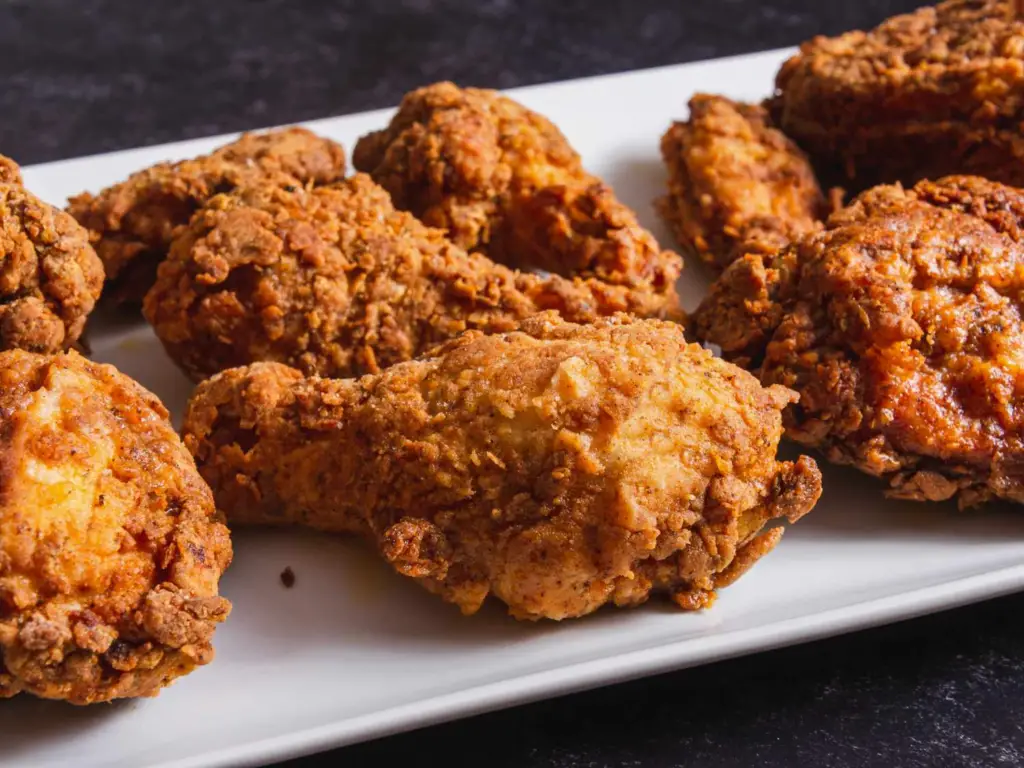
History and Background of Southern Fried Chicken:
Southern Fried Chicken is a cherished dish deeply rooted in the American South, with origins stretching back to various cultural influences. The Scottish were known to deep-fry chicken in fat.
African slaves brought seasoning techniques and the practice of frying to create a dish that was flavorful and portable, which made it a staple food for slaves. Over time, Southern Fried Chicken became a symbol of Southern hospitality and comfort food, a mainstay for family gatherings and community celebrations.
Its popularity surged nationwide, especially with the advent of fast-food chains that specialize in the dish.
American Cuisine – List of Ingredients for Southern Fried Chicken:
For the Chicken
- 1 whole chicken, cut into pieces (or about 3 pounds of your preferred chicken parts)
- 2 cups buttermilk
- Salt and freshly ground black pepper
- Optional: paprika, garlic powder, cayenne pepper for extra seasoning
The Breading
- 2 cups all-purpose flour
- 1 teaspoon salt
- 1 teaspoon black pepper
- 1 teaspoon paprika (for color and a hint of sweetness)
- 1/2 teaspoon garlic powder (optional)
- 1/2 teaspoon onion powder (optional)
- 1/2 teaspoon cayenne pepper (for heat, optional)
For Frying
- Vegetable oil or lard for deep frying
Recipe for Southern Fried Chicken:
Marinating the Chicken
- In a large bowl, season the chicken pieces with salt and pepper, and any additional spices if desired.
- Pour buttermilk over the chicken to cover.
- Cover and refrigerate for at least 4 hours, or overnight for best results; this tenderizes the chicken and keeps it moist.
Preparing the Breading:
- In a large, shallow dish, combine flour, salt, pepper, paprika, garlic powder, onion powder, and cayenne pepper.
- Mix well so that the spices are evenly distribute throughout the flour.
Breading the Chicken:
- Remove the chicken from the buttermilk, letting excess drip off.
- Dredge each piece of chicken in the seasoned flour until completely covered.
- Shake off any excess flour.
- Optionally, for extra crunch, you can double-dip by dipping the floured chicken back into the buttermilk and then the flour again.
Frying the Chicken
- In a deep fryer, large pot, or cast-iron skillet, heat about 2 inches of vegetable oil or lard to 350°F (175°C).
- Use a thermometer to ensure the temperature is correct; this is key for proper frying.
- Working in batches to avoid overcrowding, carefully place the breaded chicken pieces in the hot oil.
- Fry for about 10-12 minutes, turning occasionally, until the chicken is golden brown and cooked through (an internal temperature of 165°F or 74°C).
- Remove the chicken from the oil and let it drain on a wire rack over a paper towel-lined baking sheet to keep it crispy.
Serving
- Allow the chicken to rest for a few minutes before serving.
- Chefs serve southern Fried Chicken hot or at room temperature, often accompanied by sides like mashed potatoes, coleslaw, and biscuits.
Enjoy the crunchy, savory delight of Southern Fried Chicken, a dish that embodies the heart and soul of American Southern cuisine.
American Cuisine – New England Clam Chowder: From the Sea to the Bowl
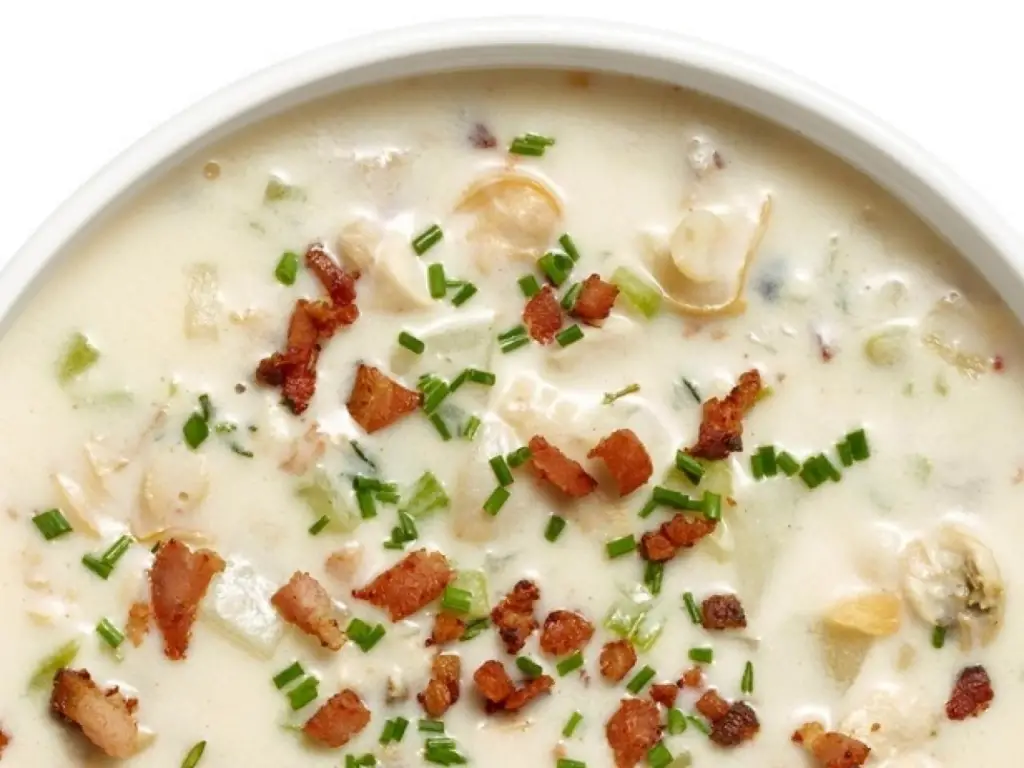
History and Background of New England Clam Chowder
New England Clam Chowder, often simply called “chowder,” is a hearty soup that hails from the northeastern United States. Its origins can be traced back to the fishing villages of New England, particularly those in Massachusetts and Maine, where it was a staple of the diet since at least the 1700s.
This dish reflects the region’s strong maritime heritage and the abundance of shellfish in the Atlantic Ocean.
The dish originated in the coastal region of New England, where clams were readily available and used in many dishes. The clam chowder was first recorded in Boston in the early 1700s, and it quickly became a staple in the region.
One of the defining features of New England clam chowder is its use of fresh clams. The harvest the clams from local waters, adding a unique and authentic flavor to the dish.
The soup’s creaminess derives from a combination of milk and heavy cream, adding richness and texture to the dish. The potatoes help to thicken the chowder and give it a satisfying, chunky consistency.
Chefs often serve New England clam chowder in a sourdough bread bowl, adding an extra layer of texture and flavor. The bread bowl is a fun and creative way to enjoy this classic dish.
Overall, New England clam chowder is a delicious example of American cuisine’s ability to take ingredients from the sea and turn them into a comforting and satisfying dish. It truly showcases the charm of this American national dish, and its journey from the sea to the bowl.
American Cuisine – List of Ingredients for New England Clam Chowder
For the Chowder
- 4 slices of bacon, finely chopped
- 1 large onion, diced
- 2 celery stalks, diced
- 3 to 4 medium potatoes, peeled and diced
- 1 garlic clove, minced
- 1 teaspoon fresh thyme leaves (or 1/2 teaspoon dried thyme)
- 2 tablespoons all-purpose flour
- 4 cups clam juice or seafood stock
- 1 bay leaf
- 2 cups heavy cream
- 2 (6.5-ounce) cans of chopped clams, drained, juice reserved
- Salt and freshly ground black pepper to taste
- Optional: fresh parsley, chopped for garnish
- Oyster crackers, for serving
Recipe for New England Clam Chowder
Preparing the Base
- In a large pot or Dutch oven, cook the bacon over medium heat until crisp.
- Use a slotted spoon to transfer the bacon to a paper towel-lined plate, leaving the fat in the pot.
- Add the diced onion and celery to the bacon fat and cook until softened, about 5 minutes.
- Stir in the minced garlic and thyme and cook for another minute.
Making the Roux
- Sprinkle the flour over the vegetables and stir to combine, cooking for a couple of minutes.
- This will help thicken the chowder.
Cooking the Chowder
- Slowly add the clam juice or seafood stock while stirring to combine with the roux, making sure there are no lumps.
- Add the diced potatoes and bay leaf. Bring the mixture to a boil, then reduce heat to a simmer.
- Cook until the potatoes are tender, about 15-20 minutes.
Finishing the Chowder
- Stir in the heavy cream and canned clams and bring back to a simmer, just to heat through.
- Be careful not to boil the chowder after adding the cream to avoid curdling.
- Season with salt and pepper to taste. Remove the bay leaf.
Serving
- Serve the chowder hot, garnished with the crispy bacon and fresh parsley if desired.
- Offer oyster crackers on the side for added texture and traditional flair.
Enjoy New England Clam Chowder fresh but can you can also refrigerate it and gently reheat it, which allows the flavors to meld beautifully. This quintessential dish is a taste of New England’s culinary history, bringing the flavors of the sea to comfort food at its finest.
American Cuisine – Tex-Mex: The Fusion of Flavors
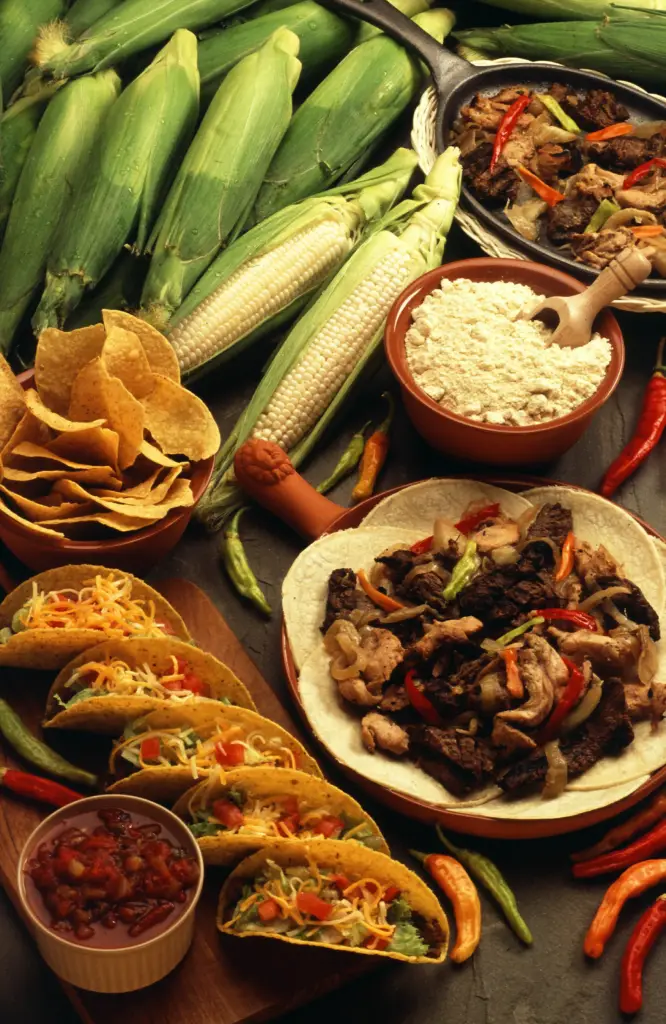
History and Background of Tex-Mex Cuisine
Tex-Mex is a regional American cuisine deeply rooted in the borderlands between Texas and Mexico. Its history begins with the Tejanos, Texans of Spanish or Mexican heritage, who lived in Texas before it became a republic.
Over time, the cuisine developed as a blend of Spanish and Mexican peasant food with Texas farm and cowboy fare. By the mid-20th century, Tex-Mex had taken on new elements with the adoption of cheese-covered dishes, heavily spiced meats, and the widespread use of cumin.
Distinct from traditional Mexican cuisine, Tex-Mex gained popularity beyond the Lone Star State through the adaptation of Mexican food in Texan style.
Dishes such as nachos, chili con carne, and fajitas are central to Tex-Mex and have become popular internationally. What sets Tex-Mex apart is its liberal use of shredded cheese, black beans, beef, wheat flour, and spices like cumin—ingredients that are less common in traditional Mexican cooking.
Tex-Mex dishes are known for their bold flavors, spicy kick, and hearty portions. From sizzling fajitas to crispy chimichangas, Tex-Mex cuisine offers a diverse range of dishes that are sure to satisfy any appetite.
One of the most popular Tex-Mex dishes is the iconic nachos. These crispy tortilla chips are topped with melted cheese, seasoned beef, fresh salsa, and sour cream, creating a delicious and satisfying snack or meal. Another Tex-Mex favorite is the burrito, a soft flour tortilla stuffed with rice, beans, meat, and vegetables, and topped with salsa or guacamole.
The Herbs and Spices Add Flavor
Another aspect that makes Tex-Mex cuisine so unique is the use of spices and herbs. Cumin, chili powder, and oregano are just a few of the spices used in Tex-Mex cooking, creating a flavorful and aromatic experience for the taste buds.
Whether you’re dining at a Tex-Mex restaurant or whipping up your own dishes at home, Tex-Mex cuisine is a delicious and fun way to experience the fusion of American and Mexican flavors. It’s no wonder that it has become one of the most beloved parts of the American national dish.
American Cuisine – List of Ingredients for a Classic Tex-Mex Dish
Let’s take fajitas as a classic example of Tex-Mex cuisine:
For the Fajitas
- 1 1/2 pounds skirt steak or chicken breast
- 3 bell peppers (preferably a mix of colors), sliced
- 1 large onion, sliced
- 2 tablespoons of vegetable oil
- Flour tortillas, for serving
The Marinade
- 1/4 cup lime juice
- 1/3 cup water
- 2 tablespoons olive oil
- 2 cloves garlic, minced
- 1 tablespoon vinegar
- 1 tablespoon soy sauce
- 1 teaspoon liquid smoke (optional)
- 1 teaspoon salt
- 1/2 teaspoon chili powder
- 1/2 teaspoon cayenne pepper
- 1/2 teaspoon ground cumin
- 1/2 teaspoon onion powder
- 1/2 teaspoon garlic powder
Serving
- Sour cream
- Guacamole
- Salsa
- Shredded cheese (cheddar or Monterey Jack)
- Fresh cilantro, chopped
- Lime wedges
Comprehensive Recipe for Tex-Mex Fajitas
Marinating the Meat
- In a bowl, whisk together all the marinade ingredients.
- Place the meat in a resealable plastic bag and pour in the marinade, making sure it’s well coated.
- Marinate in the refrigerator for at least 1 hour or up to 8 hours for deeper flavor.
Cooking the Fajitas
- Preheat a grill or cast-iron skillet over medium-high heat.
- Remove the meat from the marinade and grill or sear for about 5 minutes on each side, or until well-charred and cooked to your preference.
- Let the meat rest for a few minutes before slicing it against the grain into strips.
- In the same skillet or on the grill, cook the sliced bell peppers and onions with vegetable oil until they’re soft and slightly charred.
Assembling the Fajitas
- Warm the flour tortillas on the grill or in a dry skillet until pliable.
- Serve the sliced meat and vegetables immediately, allowing everyone to build their own fajitas by loading up tortillas with meat, peppers, onions, and their choice of toppings like sour cream, guacamole, salsa, shredded cheese, cilantro, and a squeeze of lime juice.
Tex-Mex fajitas are a festive and interactive meal, embodying the Tex-Mex tradition of communal dining and bold flavors. Whether for a casual family dinner or a celebratory gathering, fajitas bring a taste of Texan hospitality and Mexican zest to the table.
American Cuisine – Chicago Deep-Dish Pizza: Thick and Delicious
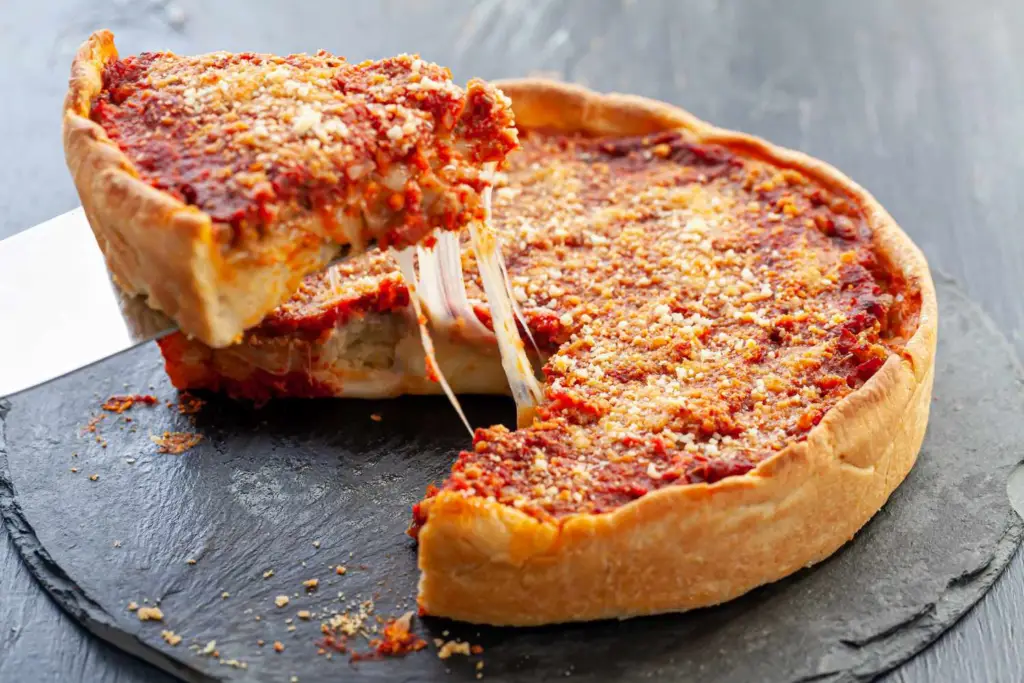
History and Background of Chicago Deep-Dish Pizza
Chicago Deep-Dish Pizza, also known as Chicago-style pizza, originated in the Windy City in the early 1940s. While the exact origins are often debated, most accounts attribute the creation of this distinctive pizza style to Pizzeria Uno and its founder Ike Sewell.
Unlike traditional Italian pizza, the Chicago Deep-Dish is known for its high-edged, buttery crust which allows for a generous amount of cheese and chunky tomato sauce.
Chicago deep-dish pizza is a true American national dish, known for its thick crust and plentiful toppings. This savory pie has made its mark on the Windy City and beyond, becoming a must-try for pizza lovers.
The Deep Dish Pizza First Appeared in the 1940s
The origins of deep-dish pizza can be traced back to the 1940s, when pizzerias in Chicago began to experiment with new styles of pizza. The result was a thick, pie-like crust that could hold an abundance of cheese, sauce, and toppings. The pizza was baked in a deep dish, creating a unique texture and flavor.
Today, deep-dish pizza is synonymous with Chicago cuisine, and visitors to the city can find it at pizzerias throughout the city. The pizza is typically sliced into small, hearty pieces that are perfect for sharing with friends and family.
What sets Chicago deep-dish pizza apart from other pizza styles is its thickness and abundance of toppings. The crust is sturdy enough to hold up to the weight of multiple toppings, from sausage and pepperoni to vegetables and cheese. The result is a pizza that is filling, flavorful, and undeniably delicious.
Whether you’re a local or a visitor to Chicago, deep-dish pizza is a must-try when exploring the city’s food culture. Bite into a slice of this iconic American national dish and experience the unique flavor and texture that have made it a beloved favorite.
This style of pizza is characterized by its construction, which inverts the order of ingredients. Cheese and toppings are layered directly on the dough, while the sauce is typically applied on top, preventing the cheese from burning due to the longer baking time.
The crust, which can be several inches tall, is sturdy and thick enough to support the weight of the abundant fillings.
American Cuisine – List of Ingredients for Chicago Deep-Dish Pizza
For the Dough
- 4 cups all-purpose flour
- 3 tablespoons cornmeal
- 1 3/4 teaspoons salt
- 2 3/4 teaspoons instant yeast
- 4 tablespoons unsalted butter, melted
- 2 tablespoons vegetable oil
- 1 1/2 cups water, lukewarm
For the Filling
- 2 cups mozzarella cheese, shredded
- 1 pound Italian sausage, cooked and crumbled (optional)
- 1 small onion, chopped (optional)
- 1 green bell pepper, chopped (optional)
- Mushrooms, sliced (optional)
- Additional toppings as desired (pepperoni, cooked bacon, etc.)
The Sauce
- 1 (28-ounce) can crushed tomatoes
- 1 teaspoon sugar
- 1 teaspoon dried oregano
- 1/2 teaspoon dried basil
- 1/2 teaspoon salt
- 1/4 teaspoon red pepper flakes (optional)
For Assembly
- Additional melted butter for brushing the pan
- Grated Parmesan cheese, for sprinkling on top
Comprehensive Recipe for Chicago Deep-Dish Pizza
Preparing the Dough
- Combine the flour, cornmeal, salt, and yeast in a large bowl or the bowl of a stand mixer.
- Add the melted butter, vegetable oil, and lukewarm water.
- Mix until a cohesive dough forms.
- Knead the dough until it is smooth and elastic, about 6-7 minutes by hand or with a dough hook attachment on a stand mixer.
- Lightly oil a large bowl and let the dough rise until it’s just about doubled in size, roughly 60 minutes.
Preparing the Sauce
- While the dough is rising, mix together the crushed tomatoes, sugar, oregano, basil, salt, and red pepper flakes in a saucepan.
- Simmer over low heat until the sauce thickens slightly, about 20-30 minutes, then set aside to cool.
Assembling the Pizza
- Preheat the oven to 475°F (245°C).
- Once the dough has risen, punch it down and stretch it out to fit into a greased 12-inch round deep-dish pizza pan, making sure to push it up the sides of the pan.
- Layer the mozzarella cheese directly on the dough. Add the sausage, onions, peppers, mushrooms, and any other desired toppings.
- Pour the sauce over the toppings, spreading it out to cover everything.
- Sprinkle grated Parmesan cheese on top.
Baking the Pizza
- Bake the pizza for around 25-35 minutes or until the crust is golden and the cheese is bubbly.
- Check halfway through baking and if the edges are browning too quickly, cover them with foil.
- Remove from the oven and let it cool for a few minutes before slicing and serving.
Chicago Deep-Dish Pizza is best enjoyed fresh from the oven, with a crispy, buttery crust and a molten layer of cheese and toppings. It’s a filling, comforting dish that’s become a beloved icon of Chicago’s rich culinary landscape.
American Cuisine – Key Lime Pie: A Taste of the Tropics
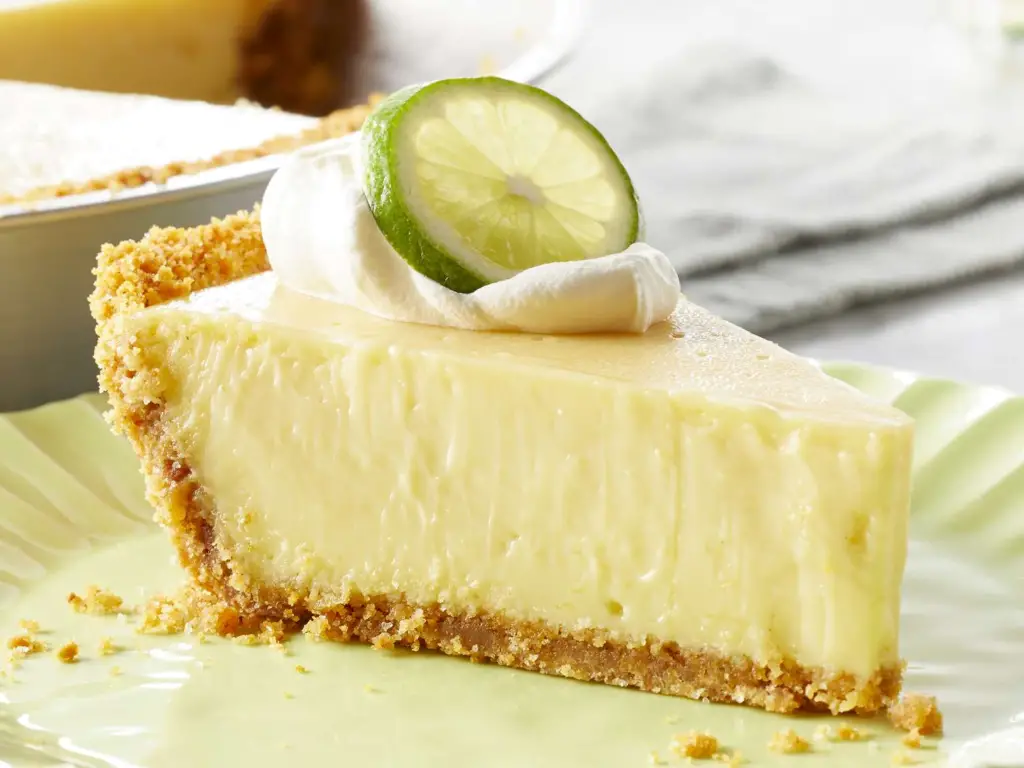
History and Background of Key Lime Pie
When it comes to American national dishes, it’s hard to beat the mouthwatering flavor of Key Lime pie. This tangy and refreshing dessert has its roots in the tropical climate of Florida, where Key limes are abundant.
The origins of this iconic pie can be traced back to the early 20th century, when Key West was a bustling port town. Local cooks would use condensed milk, a staple of the era, and the juice of local Key limes to create a delicious and easy-to-make dessert.
Today it’s Eaten Across the Country
Today, Key Lime pie is a beloved dessert across the country, with variations that include meringue toppings, graham cracker crusts, and even ice cream. But no matter how it’s served, Key Lime pie remains a symbol of the carefree, tropical lifestyle that is so closely associated with Southern Florida.
So the next time you’re in the mood for something sweet and tangy, treat yourself to a slice of Key Lime pie. You’ll be transported to the tropics with every bite!
Key Lime Pie is the quintessential American dessert originating from the Florida Keys, a region famous for its key lime fruit. The exact origins of Key Lime Pie are somewhat murky, but the recipe is believed to have been conceived in the late 19th century. It is thought to have been the creation of “Aunt Sally,” a cook for Florida’s first self-made millionaire, William Curry.
The pie became particularly popular in the early 20th century when canned milk became widely available, as fresh milk was not a common commodity in the Florida Keys before modern refrigerated distribution methods. The traditional Key Lime Pie is prized for its smooth, creamy texture and its balance of sweet and tart flavors. It is distinct from other lime pies because of the use of key limes, which are smaller and have a more aromatic and intense flavor than regular limes.
American Cuisine – List of Ingredients for Key Lime Pie
For the Crust
- 1 1/2 cups graham cracker crumbs
- 1/3 cup granulated sugar
- 6 tablespoons unsalted butter, melted
The Filling
- 4 egg yolks
- 1 (14-ounce) can sweetened condensed milk
- 2/3 cup key lime juice (freshly squeezed if possible)
- 1 tablespoon key lime zest
Topping
- 1 cup heavy whipping cream
- 1/4 cup powdered sugar
- 1/2 teaspoon vanilla extract
Comprehensive Recipe for Key Lime Pie
Preparing the Crust
- Preheat the oven to 350°F (175°C).
- Mix graham cracker crumbs and granulated sugar in a medium bowl.
- Stir in the melted butter until the mixture is well combined.
- Press the crumb mixture firmly into the bottom and up the sides of a 9-inch pie dish.
- Bake the crust for 10 minutes until set and slightly golden.
- Remove from the oven and allow to cool while preparing the filling.
Making the Filling
- Using an electric mixer, beat the egg yolks and lime zest together in a bowl until they are fluffy, about 5 minutes.
- Gradually add the sweetened condensed milk and continue to beat until thick, about 3-4 minutes longer.
- Lower the mixer speed and slowly add the key lime juice, mixing just until combined.
Assembling the Pie
- Pour the filling into the cooled graham cracker crust and spread it out evenly.
- Bake the pie for 10-15 minutes, until the filling is set but still slightly wobbly in the center.
- Remove the pie from the oven and let it cool to room temperature.
- Then refrigerate for at least 3 hours, or until completely chilled and set.
Preparing the Topping
- Just before serving, beat the heavy cream with the powdered sugar and vanilla extract until it forms soft peaks.
- Spread or pipe the whipped cream over the chilled pie.
Serving
- Garnish with additional lime zest or thin lime slices if desired.
- Slice the pie and serve it chilled.
Key Lime Pie is a refreshing and indulgent dessert that perfectly encapsulates the flavors of Florida and the tropical climate from which it hails. Its combination of a buttery crust, a tangy and creamy filling, and a sweet, whipped cream topping make it a perennial favorite, especially in the summer months.
American Cuisine – Pacific Northwest Salmon: Fresh and Flavorful
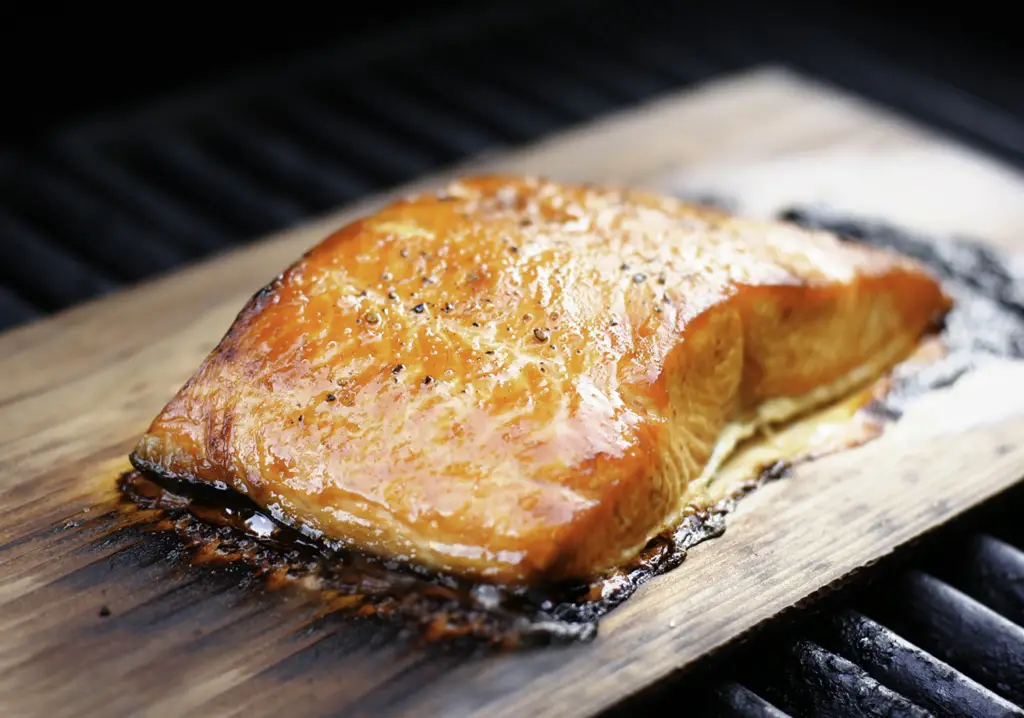
History and Background of Pacific Northwest Salmon
Salmon has been central to the culture and diet of the indigenous peoples of the Pacific Northwest for thousands of years. This region, encompassing parts of Northern California, Oregon, Washington, and British Columbia, is known for its rich marine ecosystems, including its rivers and streams, which are prime habitats for wild salmon. The fish is celebrated for its flavor, nutritional value, and its role in the local economy.
When European settlers arrived, they quickly adopted salmon into their diets. Over time, Pacific Northwest cuisine has come to be defined in part by its use of local and sustainable ingredients, with salmon at the forefront. The methods for preparing salmon are numerous, from smoking and curing to grilling and baking, each method enhancing the fish’s natural richness and versatility.
The Salmon Come From the Pacific Northwest
The Pacific Northwest is home to some of the freshest and most flavorful salmon in the world. This regional favorite has become a staple in American cuisine and is often cited as one of the country’s national dishes.
The Pacific Northwest’s mild climate and abundance of waterways create the perfect environment for salmon to thrive. The region’s Native American tribes have been catching salmon for thousands of years, and today it is a popular commercial fishery.
The most common type of salmon found in the Pacific Northwest is the Chinook, also known as King salmon. These fish can weigh up to 100 pounds and are known for their high fat content, which gives them their rich, buttery flavor.
One traditional preparation method for Pacific Northwest salmon is smoking, which imparts a deep, smoky flavor. Other popular methods include grilling, broiling, and baking. However, the best way to enjoy this fresh and flavorful fish is often simply grilled with a sprinkle of salt and a squeeze of lemon.
Salmon is not only delicious, but it also has important cultural and economic significance in the Pacific Northwest. Native American tribes have relied on salmon for subsistence and cultural practices for thousands of years, and today the commercial salmon industry is a major contributor to the region’s economy.
Whether you’re a seafood lover or just looking to try something new, Pacific Northwest salmon is a must-try dish. Its fresh, buttery flavor and cultural significance make it a true American national dish.
American Cuisine – List of Ingredients for Grilled Pacific Northwest Salmon
For the Salmon
- 4 salmon fillets (6 to 8 ounces each), preferably wild-caught Pacific salmon like King, Sockeye, or Coho
- Salt and freshly ground black pepper, to taste
- Olive oil, for brushing
The Marinade
- 1/4 cup soy sauce
- 1/4 cup olive oil
- 2 tablespoons maple syrup or honey
- 2 garlic cloves, minced
- 1 tablespoon grated fresh ginger
- 1 tablespoon apple cider vinegar or lemon juice
- 1 teaspoon Dijon mustard
Herb Relish
- 1/2 cup fresh parsley, finely chopped
- 1/4 cup fresh dill, finely chopped
- 1/4 cup chives, finely chopped
- Zest and juice of 1 lemon
- 1/4 cup olive oil
- Salt and pepper, to taste
Recipe for Grilled Pacific Northwest Salmon
Marinating the Salmon
- In a bowl, whisk together the soy sauce, olive oil, maple syrup or honey, minced garlic, grated ginger, apple cider vinegar or lemon juice, and Dijon mustard.
- Place the salmon fillets in a shallow dish or a resealable plastic bag.
- Pour the marinade over the salmon, ensuring each piece is well-coated.
- Marinate in the refrigerator for 30 minutes to 1 hour, turning the fillets occasionally.
Preparing the Herb Relish
- In a small bowl, combine the chopped parsley, dill, chives, lemon zest, and lemon juice.
- Stir in the olive oil and season with salt and pepper to taste.
- Set aside for serving.
Grilling the Salmon
- Preheat the grill to medium-high heat.
- Remove the salmon from the marinade, letting excess drip off.
- Season the fillets with salt and pepper.
- Brush the grill with olive oil to prevent sticking.
- Place the salmon on the grill, skin-side down, and cook for about 4-6 minutes.
- Carefully flip the salmon over and cook for an additional 3-5 minutes, or until the fish flakes easily with a fork and the internal temperature reaches 145°F.
Serving
- Transfer the grilled salmon to a serving platter.
- Spoon the herb relish over the top of each fillet.
- Serve immediately, optionally with a side of roasted vegetables or a fresh salad.
Grilled Pacific Northwest Salmon is not just a local delicacy; it’s a sustainable and nutritious choice that celebrates the natural bounty of the region. The preparation is simple, allowing the rich, bold flavor of the salmon to shine, complemented by the freshness of the herb relish. This dish exemplifies the clean, health-conscious approach to food that the Pacific Northwest is known for.
Conclusion
In summary, the American national dish is a vibrant and diverse reflection of the country’s unique culinary heritage. From the East Coast to the West Coast, we’ve explored the origins and charm behind each quintessential dish.
The classic burger has become a staple in American cuisine, while Southern fried chicken offers a taste of the South. New England clam chowder showcases the flavors of the coastal region, and Tex-Mex cuisine brings together the best of Mexican and American flavors.
Chicago deep-dish pizza is known for its thick and hearty crust, while Key Lime pie offers a refreshing and tangy dessert. Finally, Pacific Northwest salmon is renowned for its fresh and flavorful taste.
Each dish reflects the unique landscapes and cultural influences of its region, offering a truly authentic taste of America. So why not embark on a culinary journey from coast to coast and explore the diverse flavors that make up the American national dish?
FAQ’s
What is the American national dish?
Some examples of American national dishes include the classic burger, Southern fried chicken, New England clam chowder, Tex-Mex cuisine, Chicago deep-dish pizza, Key Lime pie, and Pacific Northwest salmon.
What makes the burger a classic favorite?
The burger is a classic favorite due to its versatility, simplicity, and widespread popularity. It has become a symbol of American fast food and backyard BBQs.
What is Southern fried chicken?
Southern fried chicken is a dish made by coating chicken pieces with seasoned flour and then deep-frying them until crispy and golden brown. It is a staple in Southern cuisine and is known for its succulent and flavorful meat.
What is New England clam chowder?
New England clam chowder is a creamy soup made with clams, potatoes, onions, and sometimes bacon. It originated in the coastal region of New England and is a beloved dish that highlights the flavors of the sea.
What is Tex-Mex cuisine?
Tex-Mex cuisine is a fusion of Mexican and American flavors and cooking styles. It combines ingredients and techniques from both cultures to create dishes like tacos, enchiladas, and chili con carne.
What is Chicago deep-dish pizza?
Chicago deep-dish pizza is a style of pizza characterized by its thick, buttery crust, chunky tomato sauce, and generous toppings. It is baked in a deep, round pan and is known for its hearty and filling nature.
What is Key Lime pie?
Key Lime pie is a tangy and refreshing dessert made with Key Lime juice, sweetened condensed milk, and a graham cracker crust. It originated in Florida’s tropical climate and has become a popular treat across the United States.
Why is Pacific Northwest salmon famous?
Pacific Northwest salmon is famous for its fresh and flavorful taste. The region is known for its sustainable salmon fisheries and the unique preparation methods used to highlight the natural flavors of the fish.

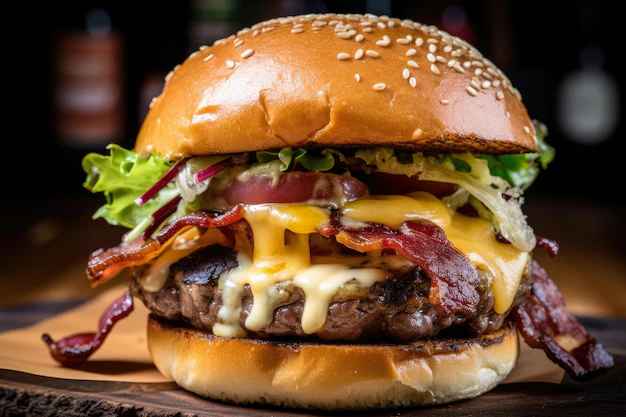
1 thought on “From Coast to Coast: 35 Quintessential American Food Recipes”
Comments are closed.